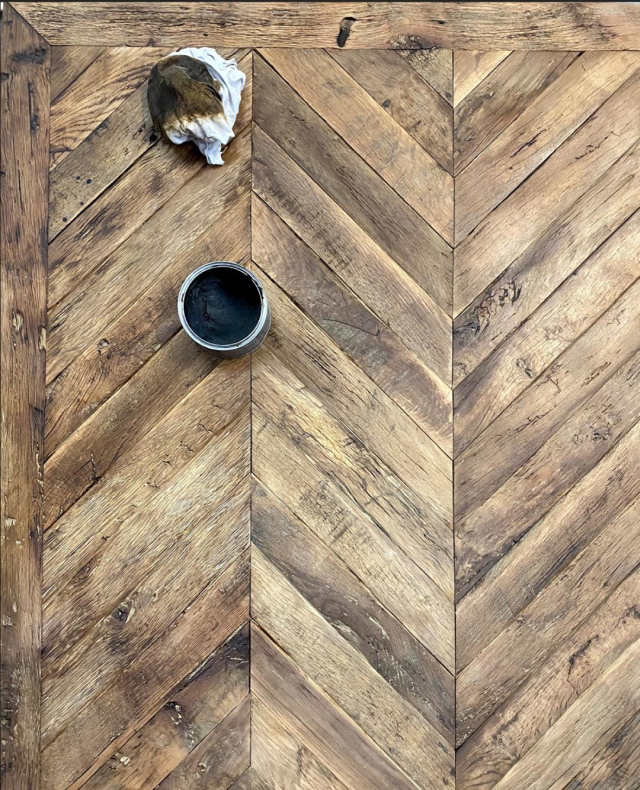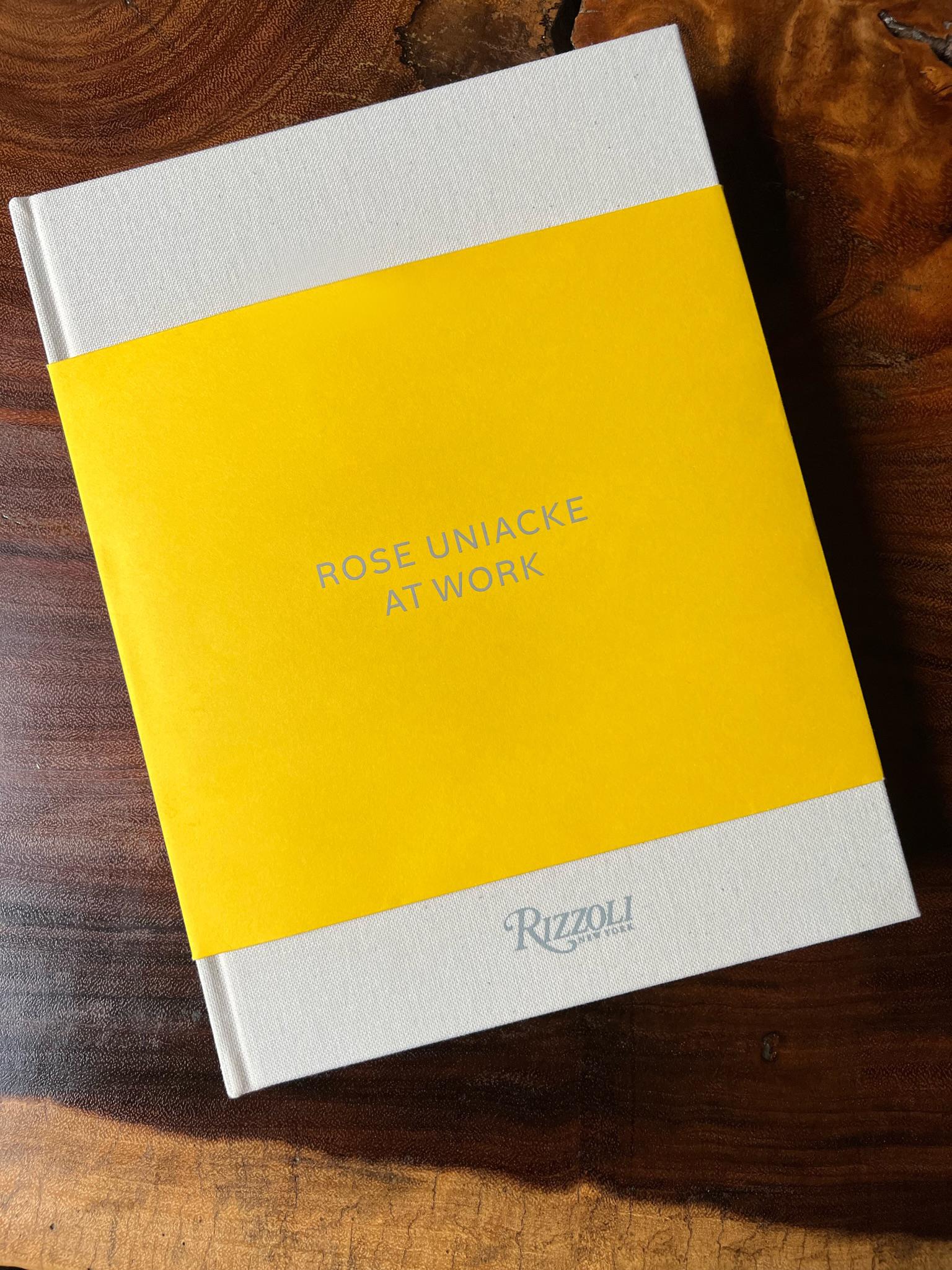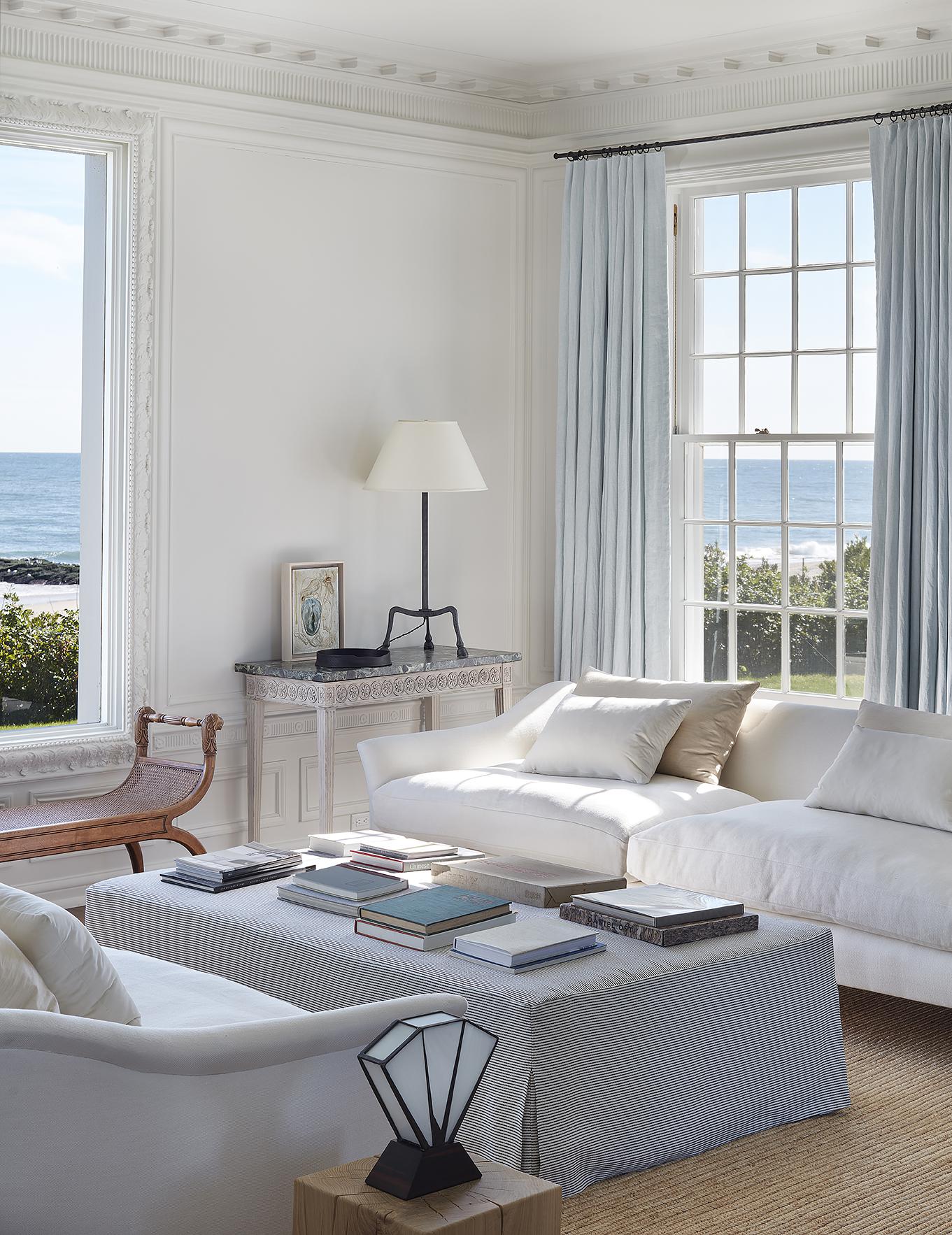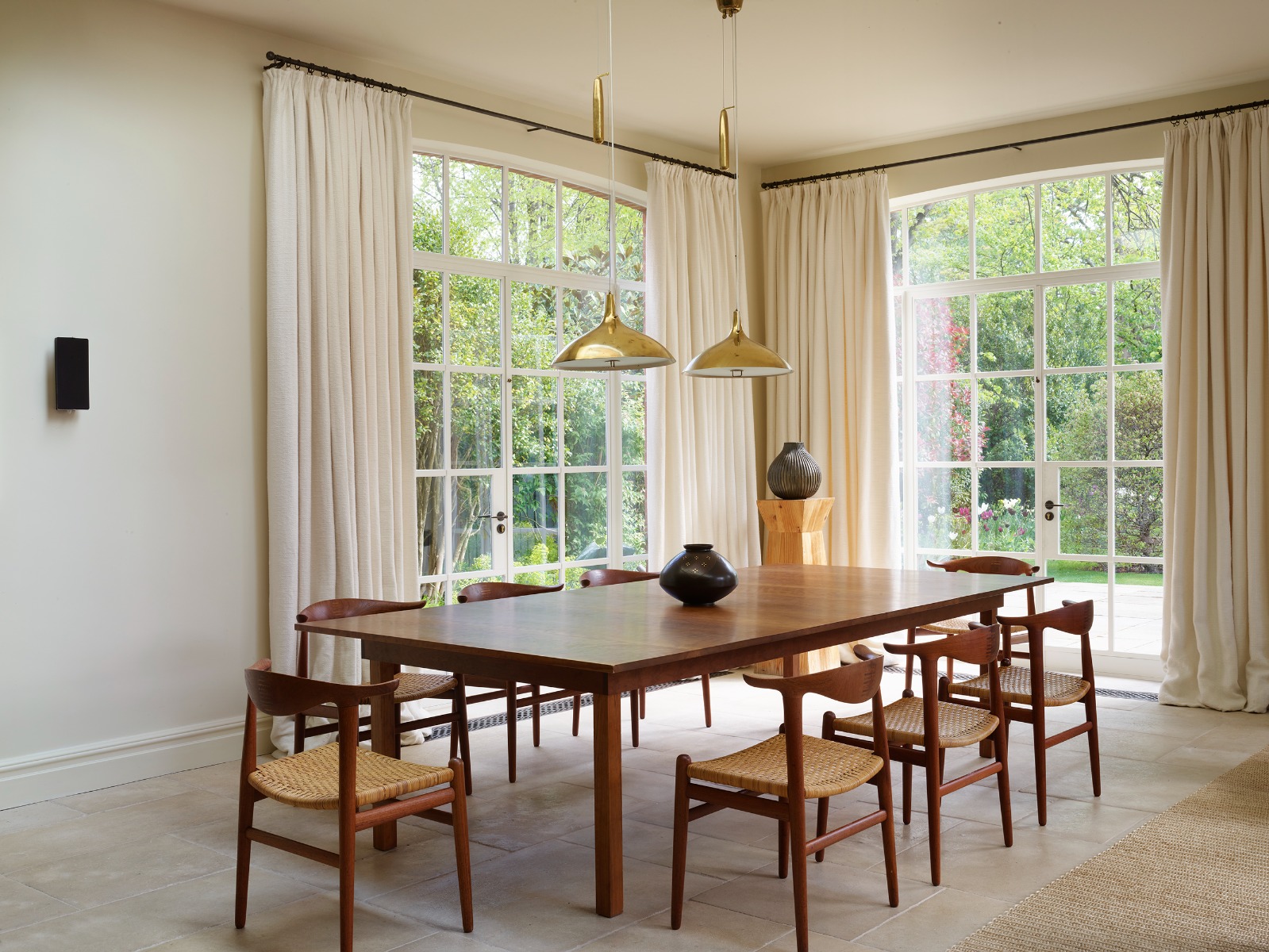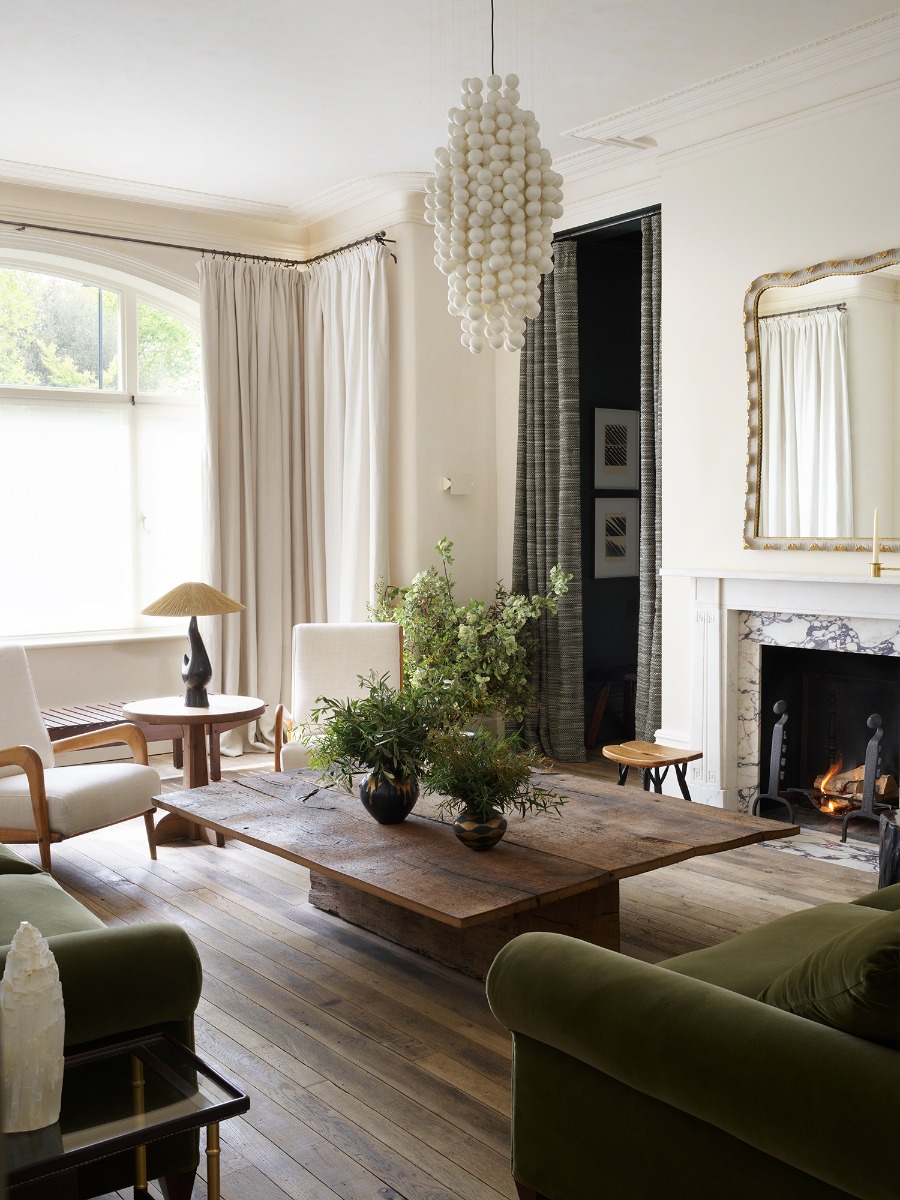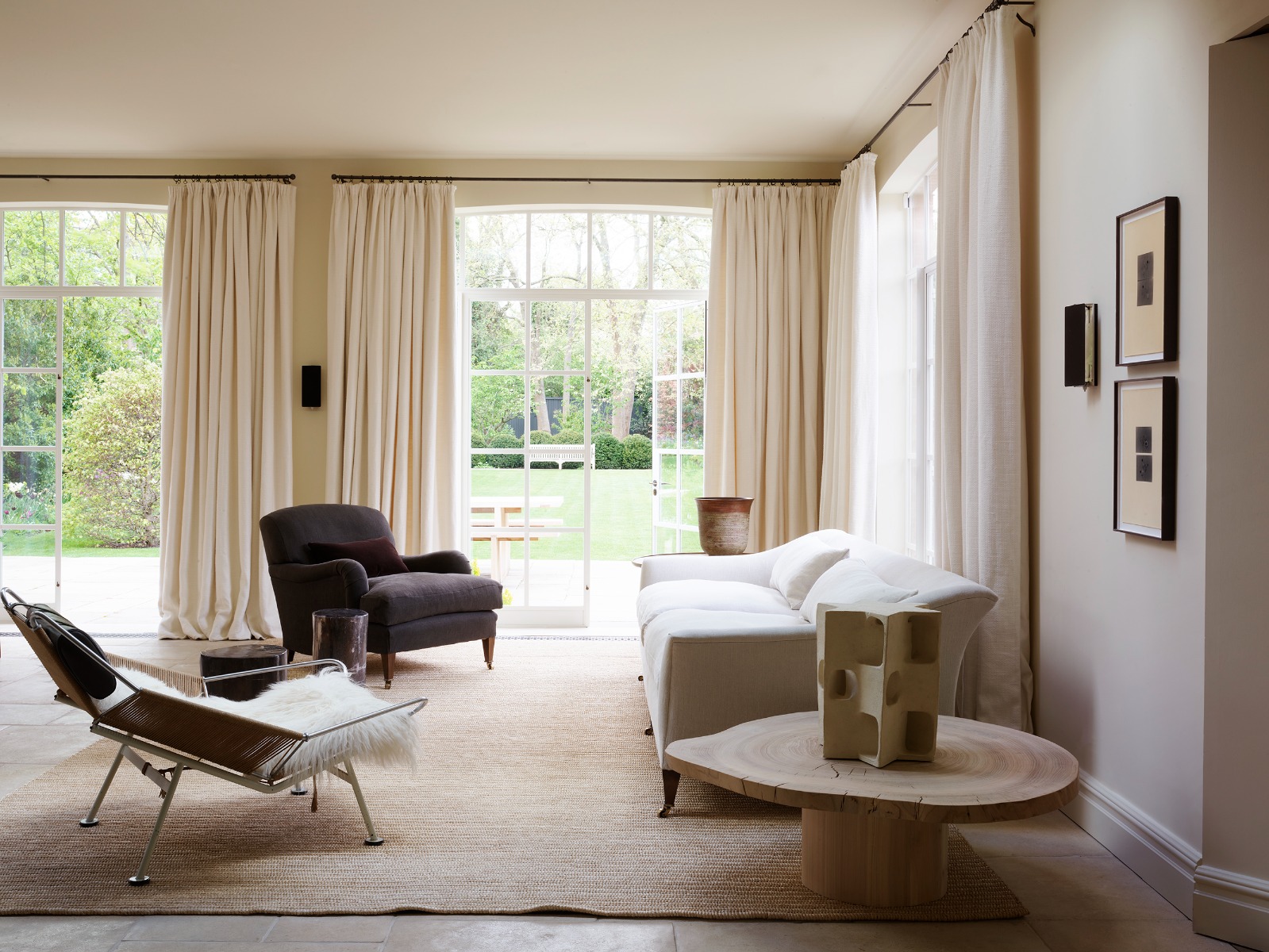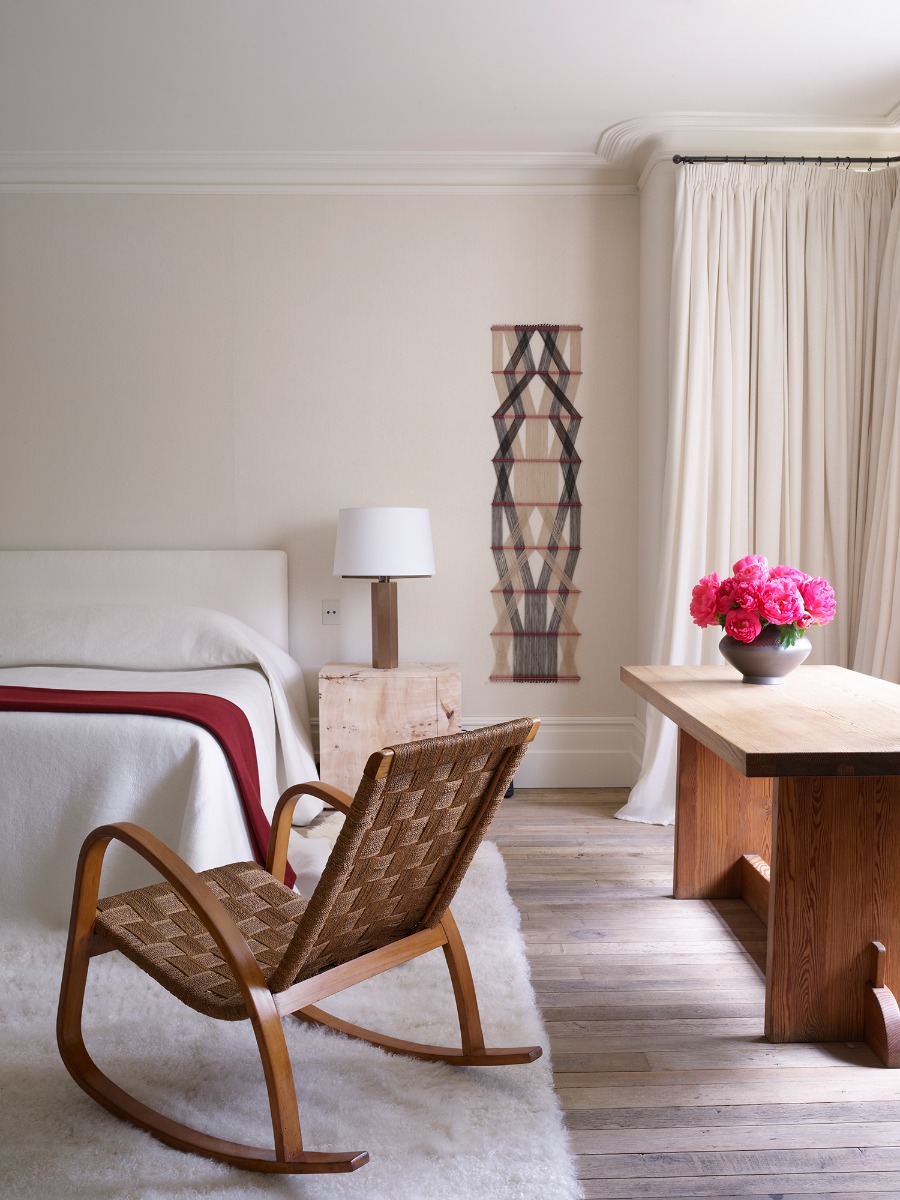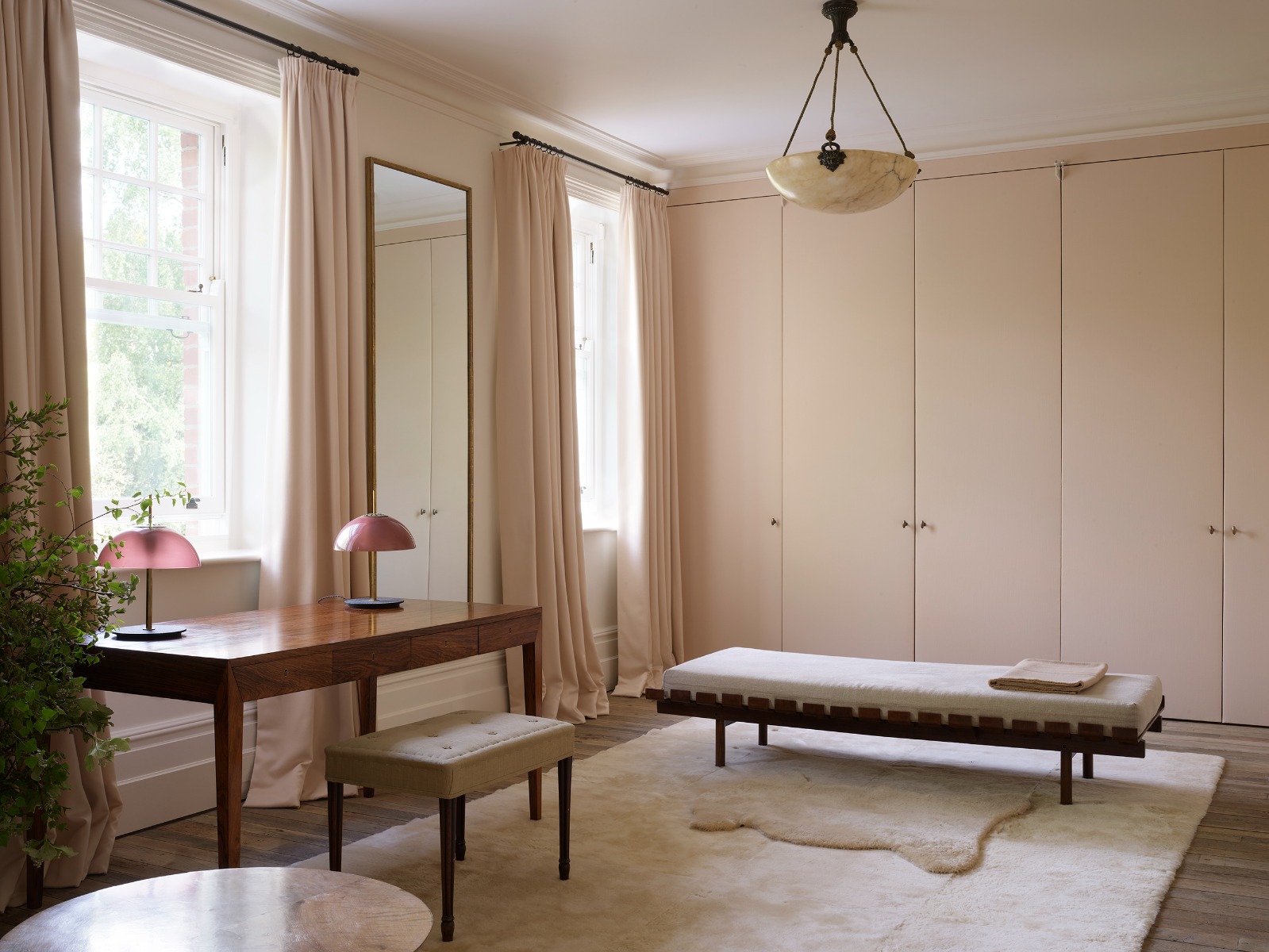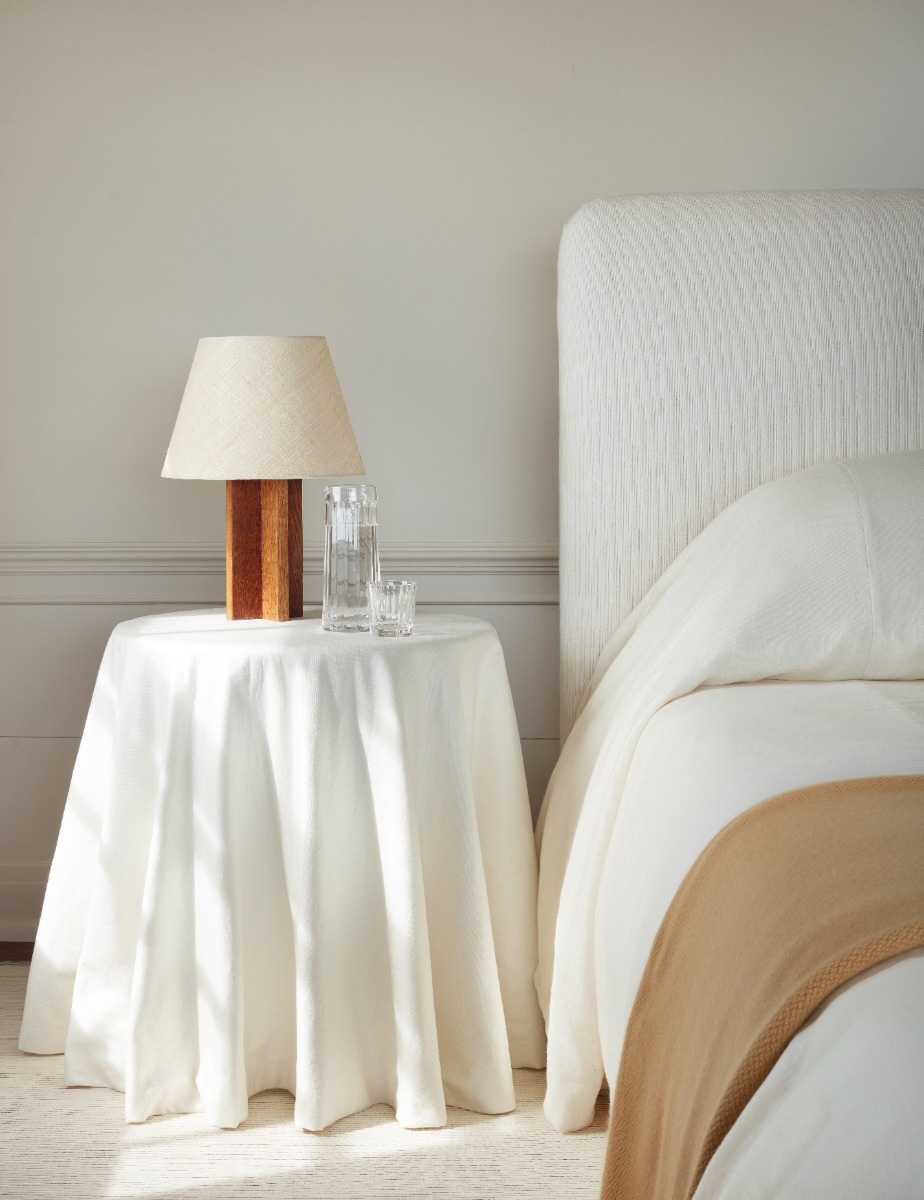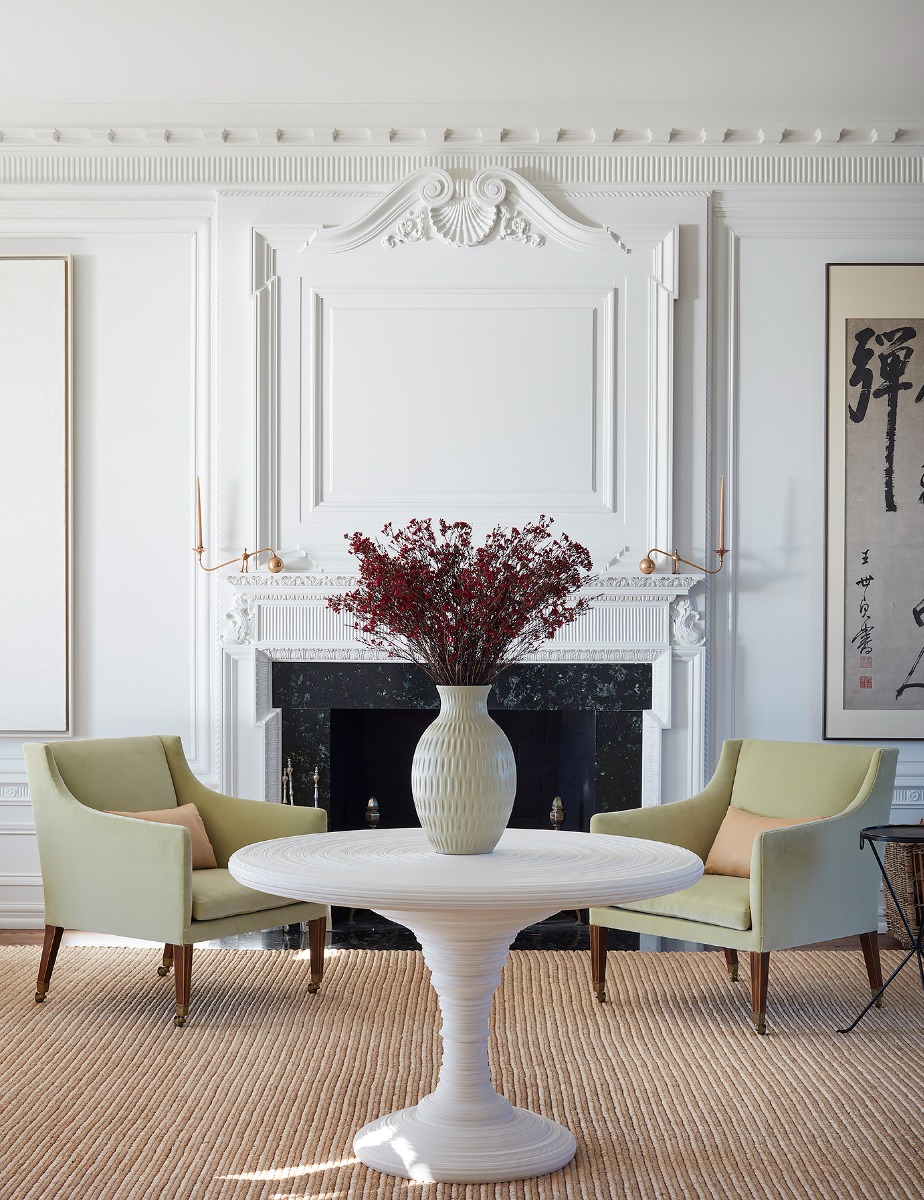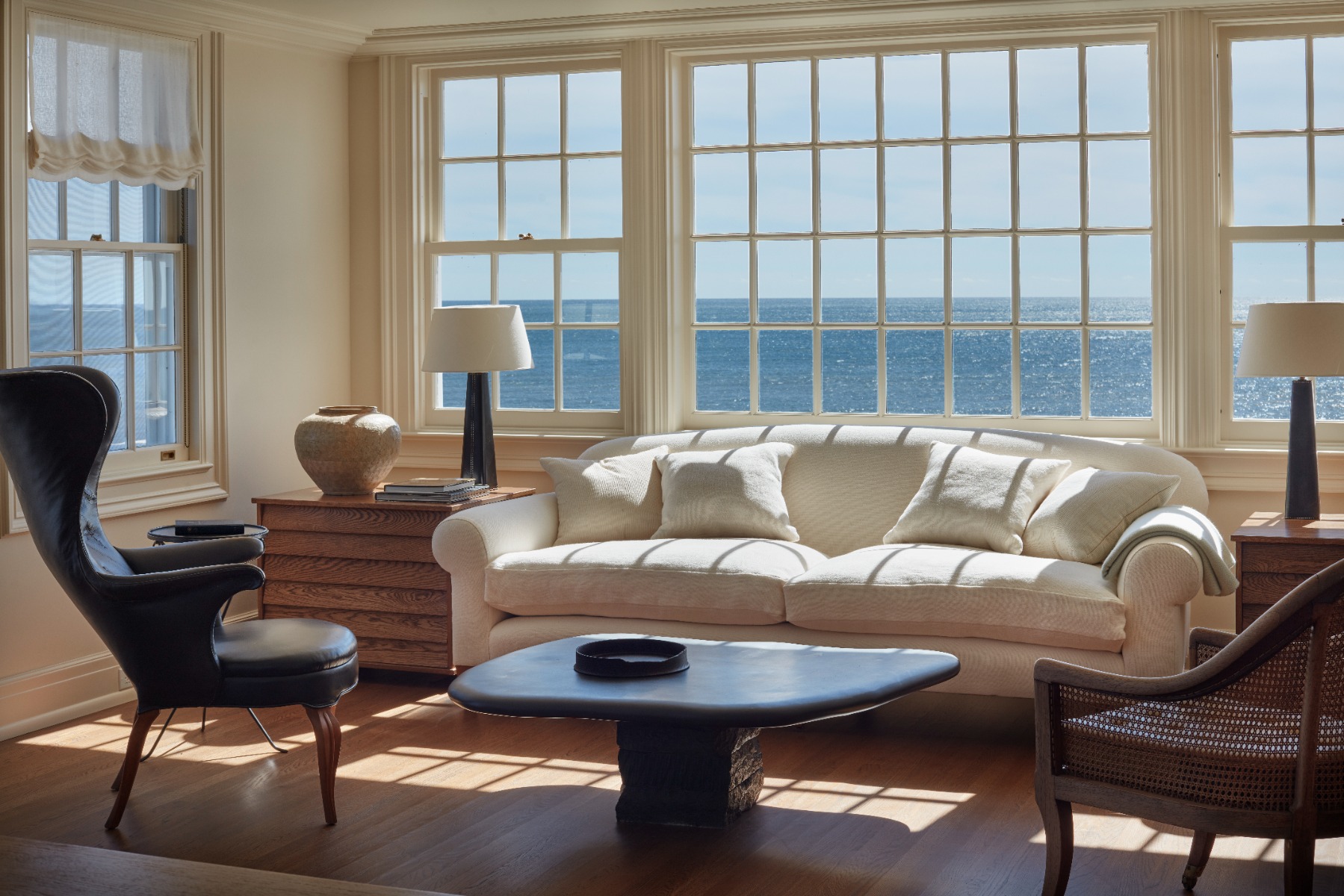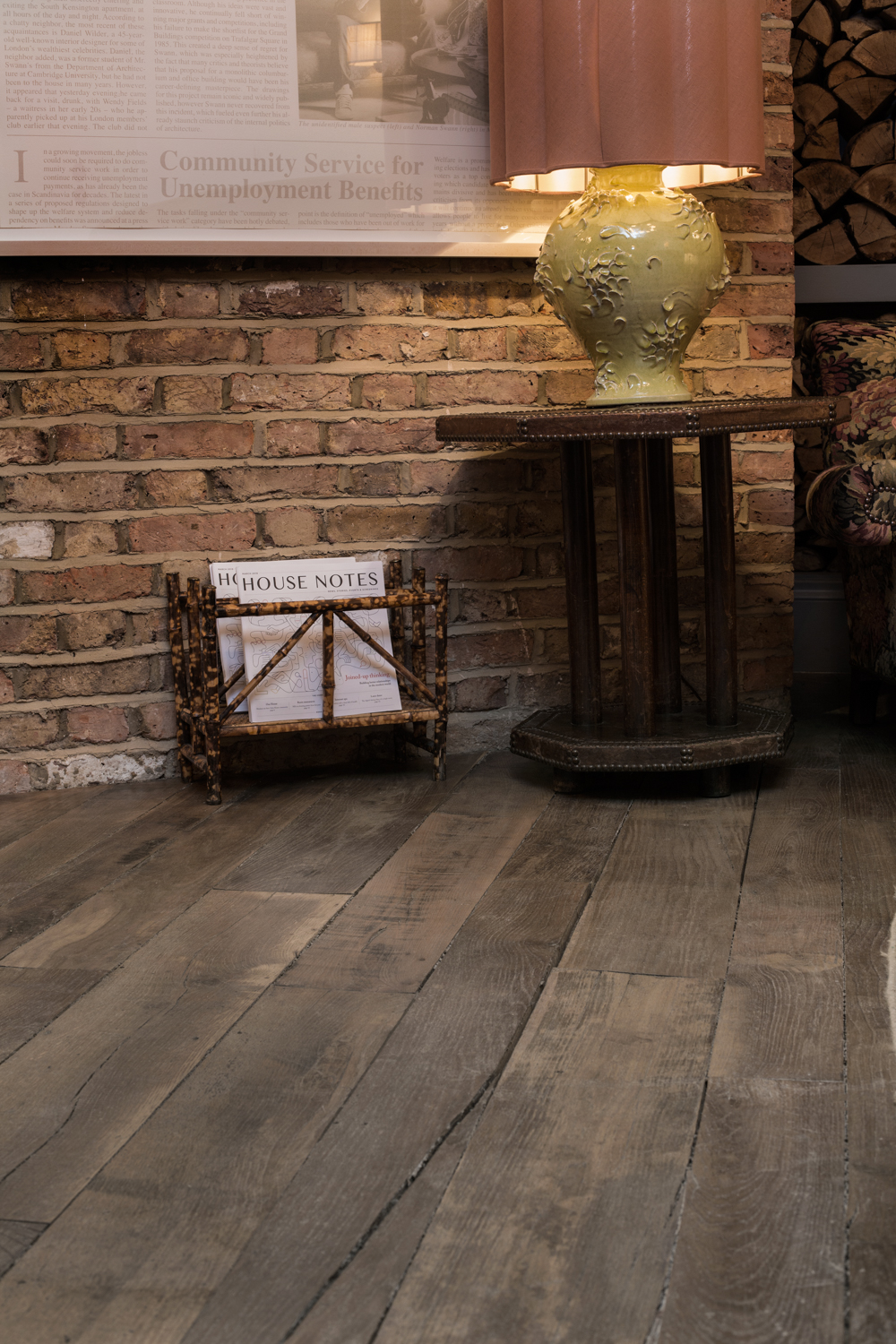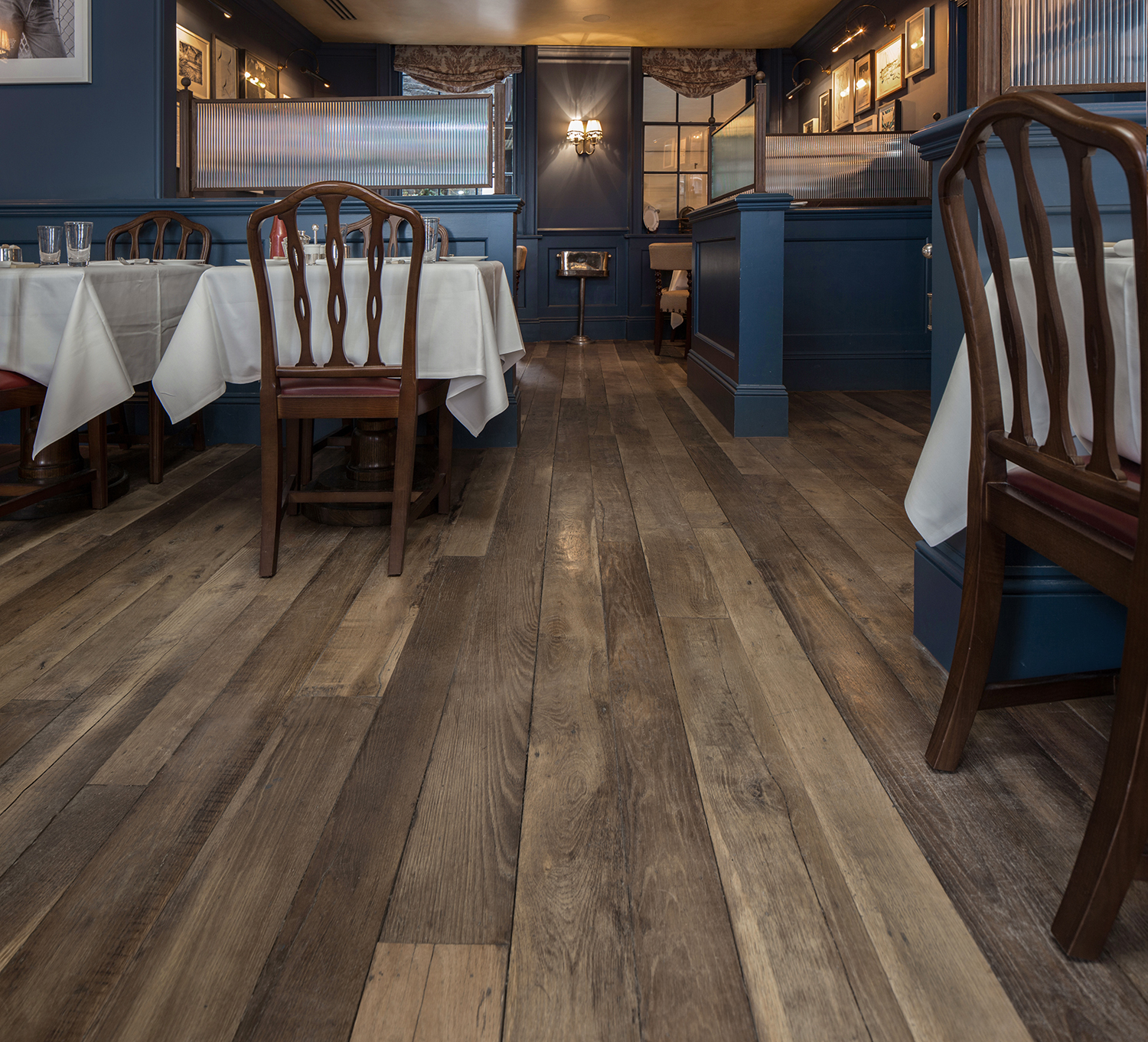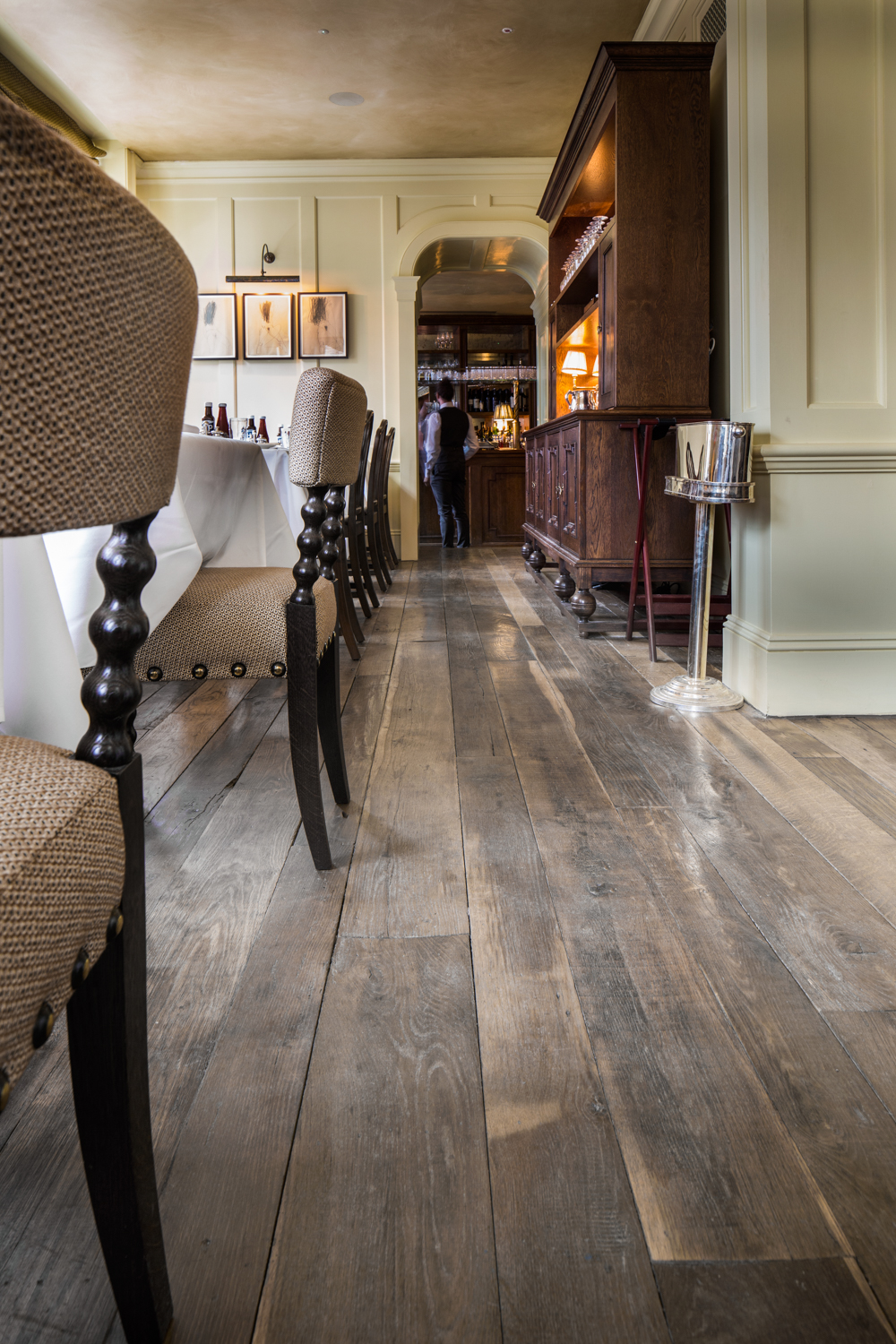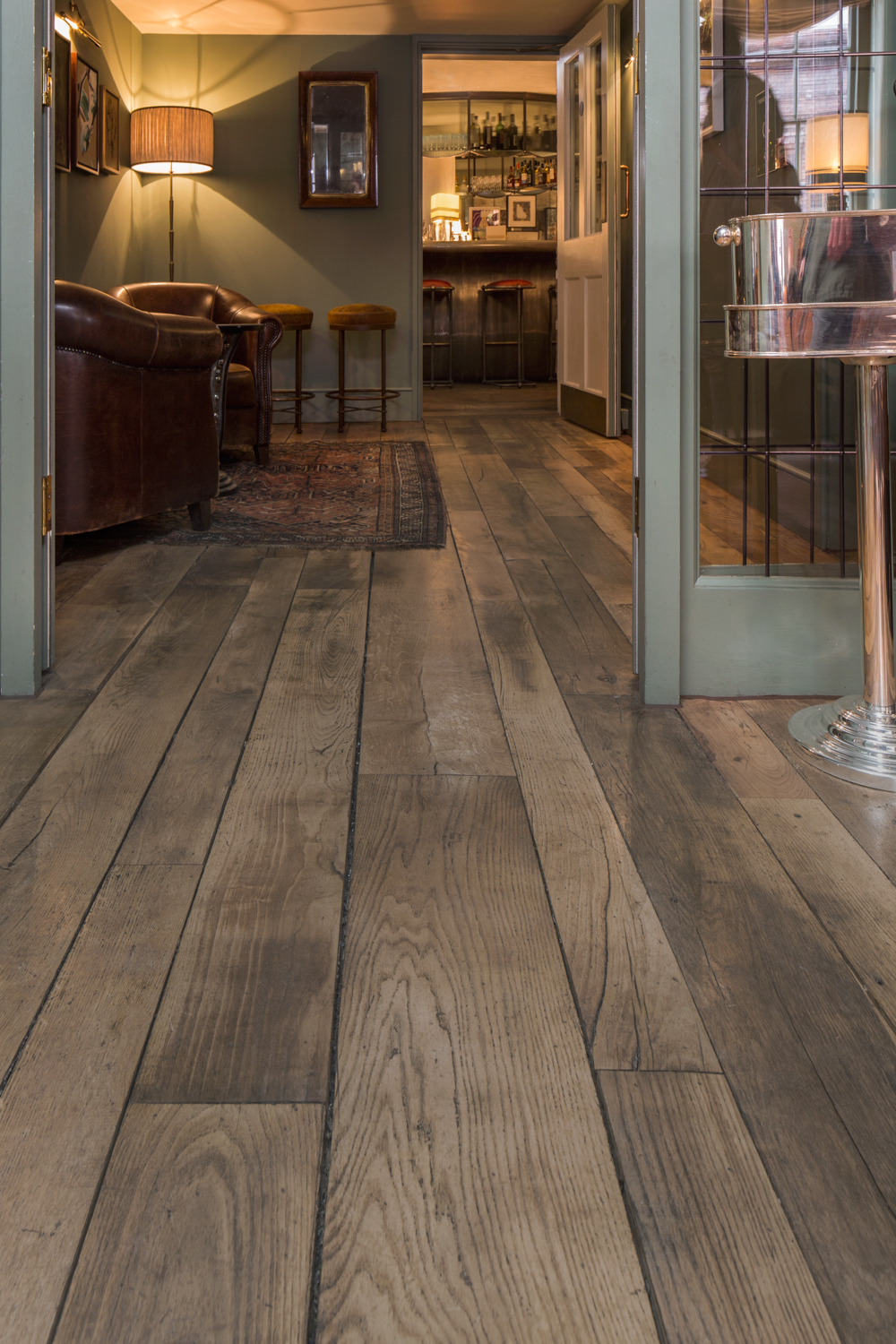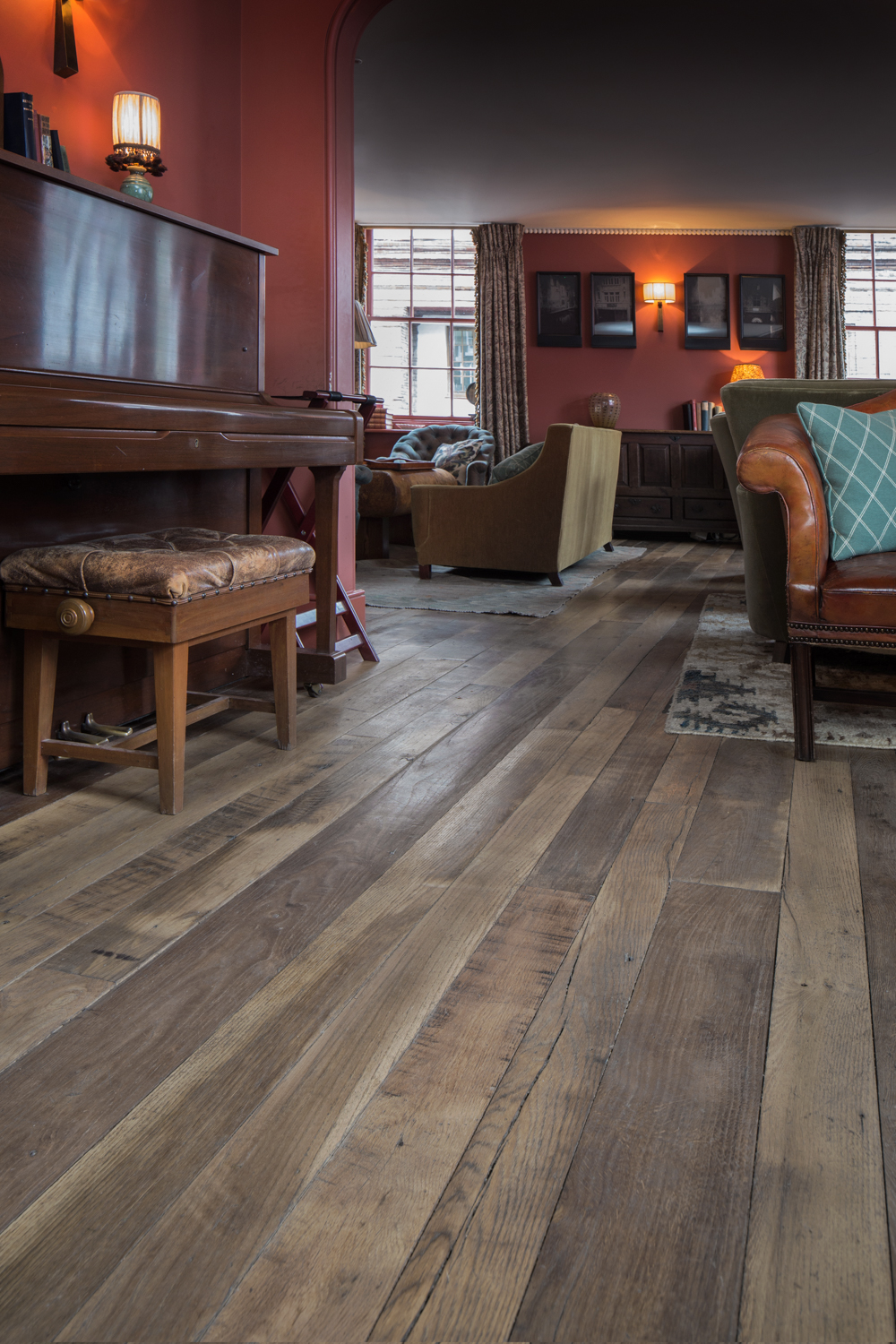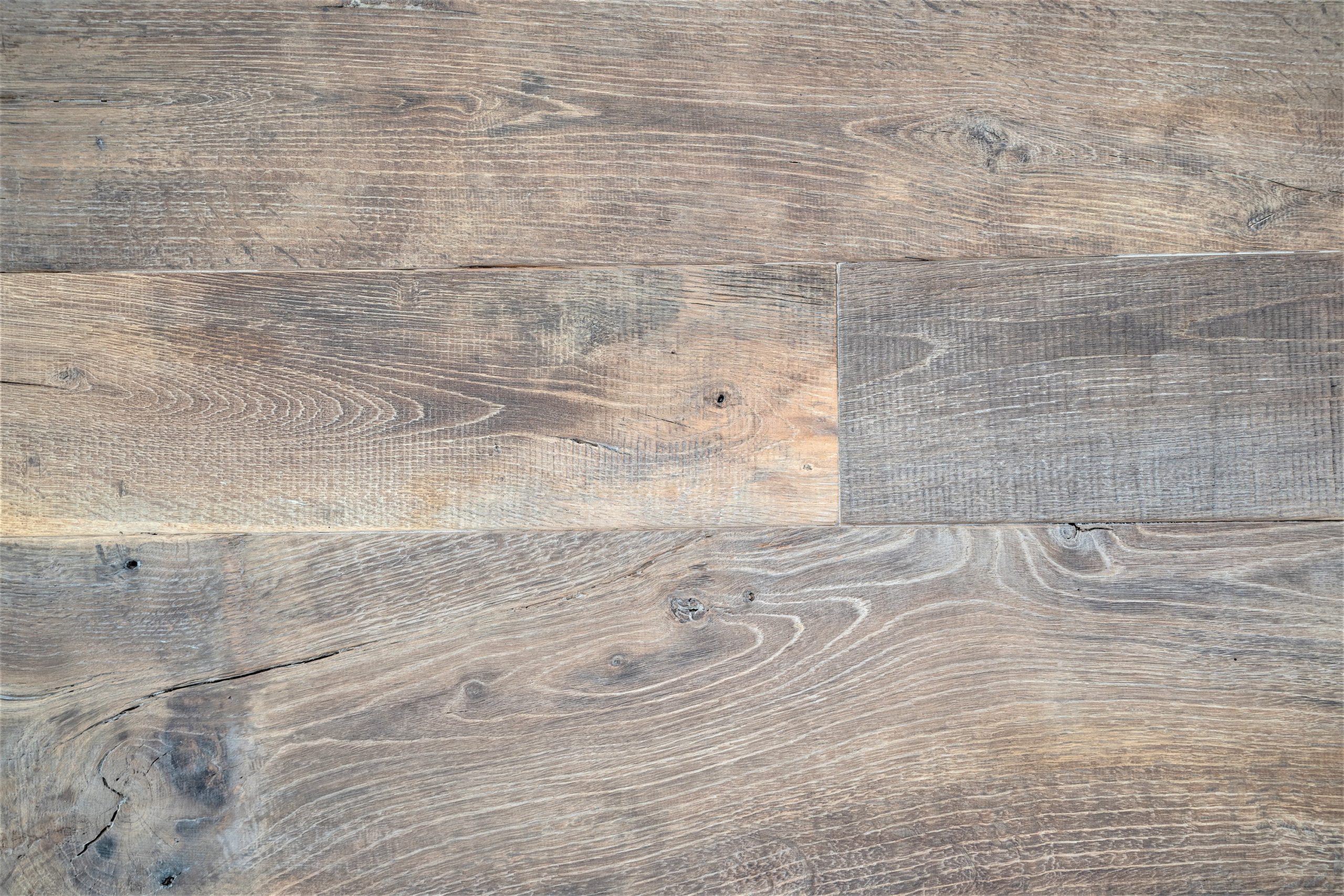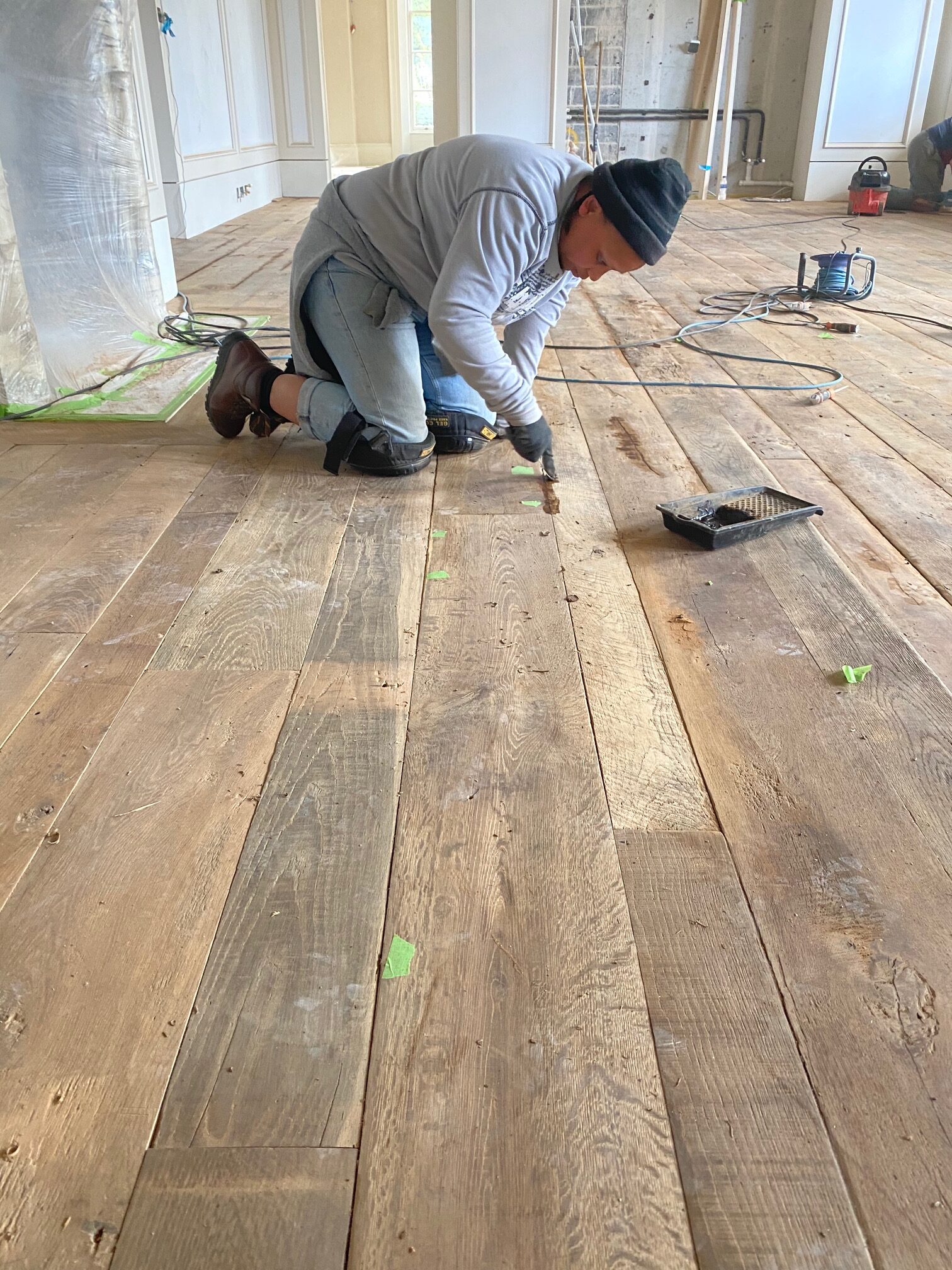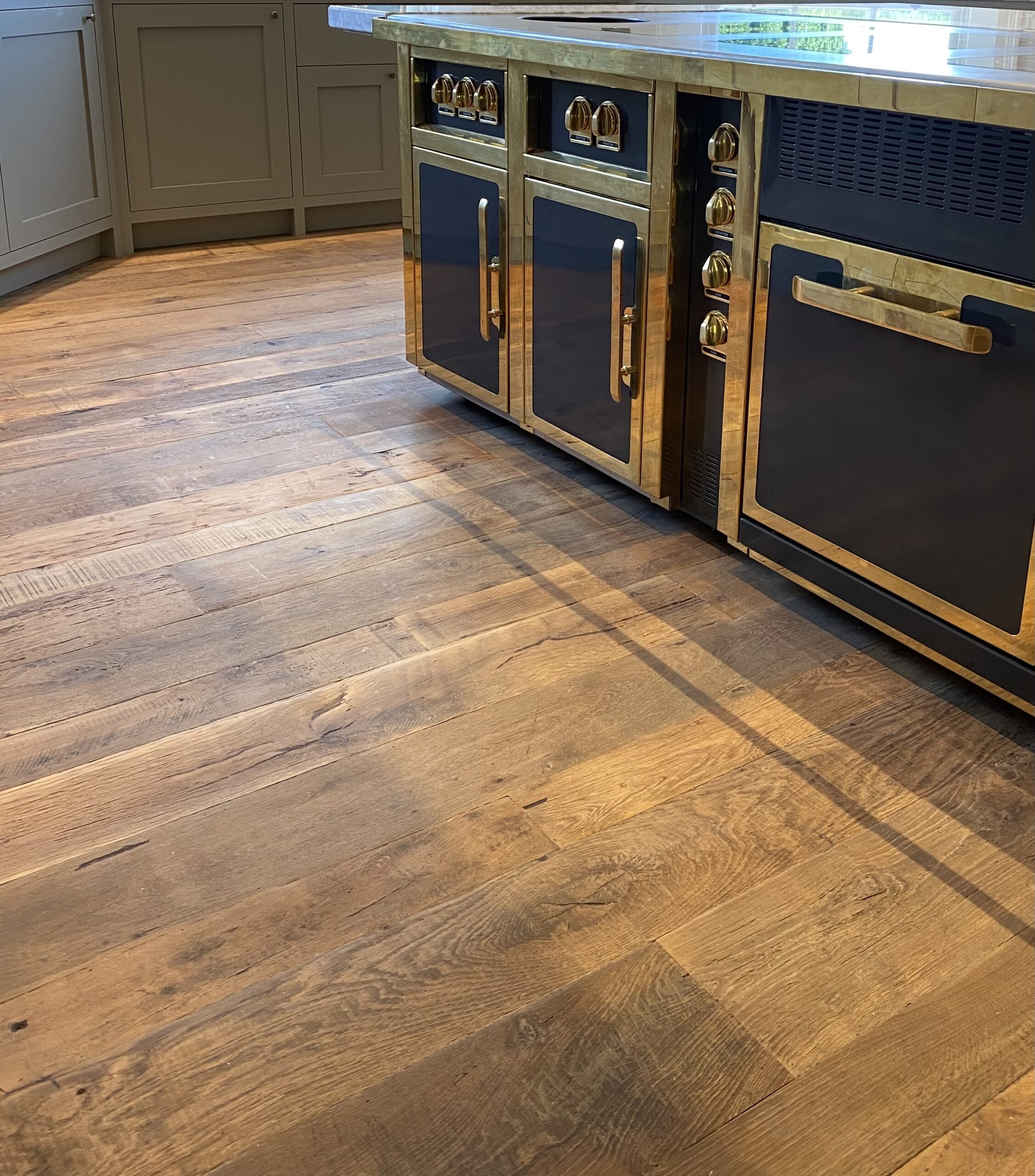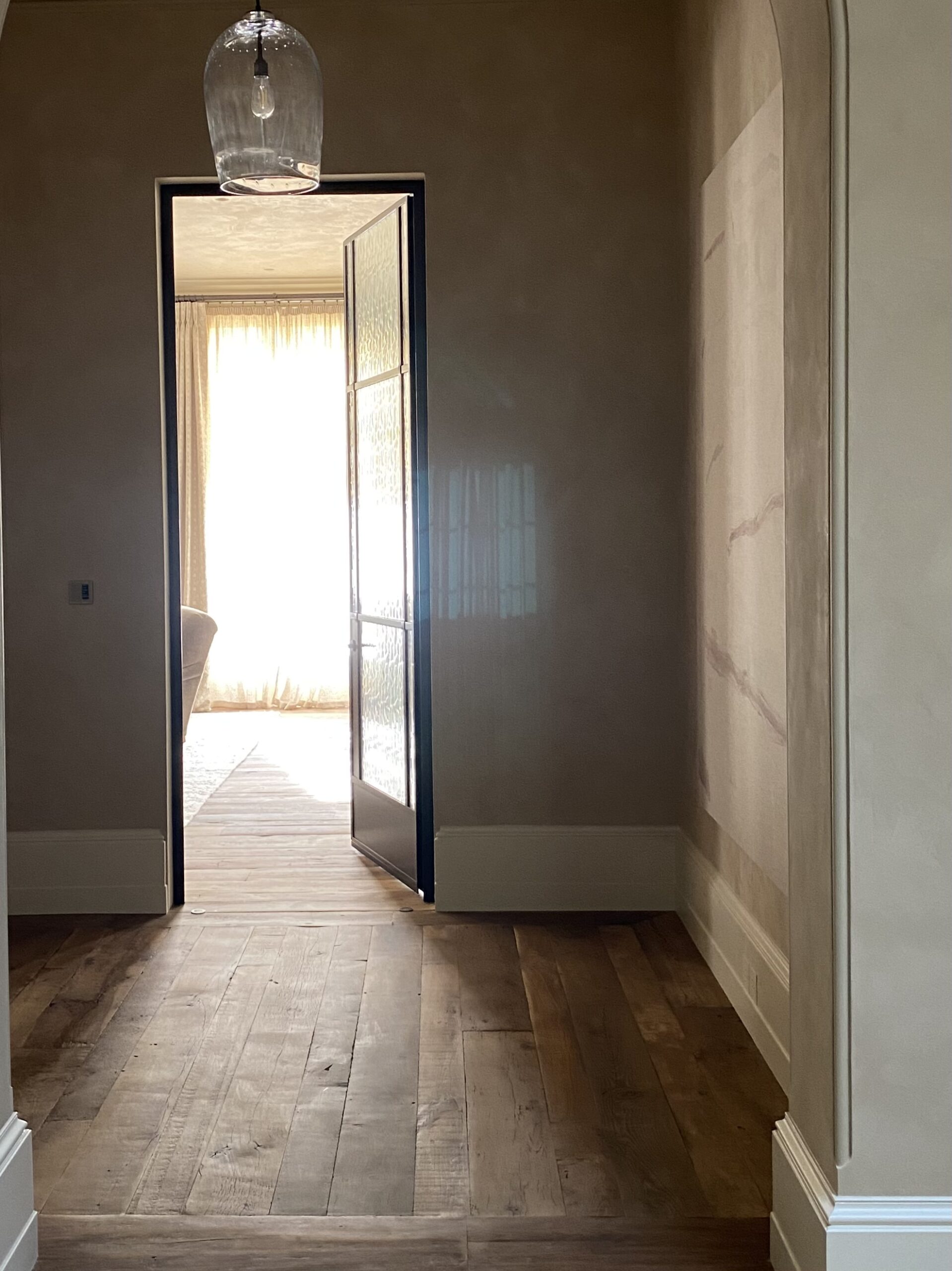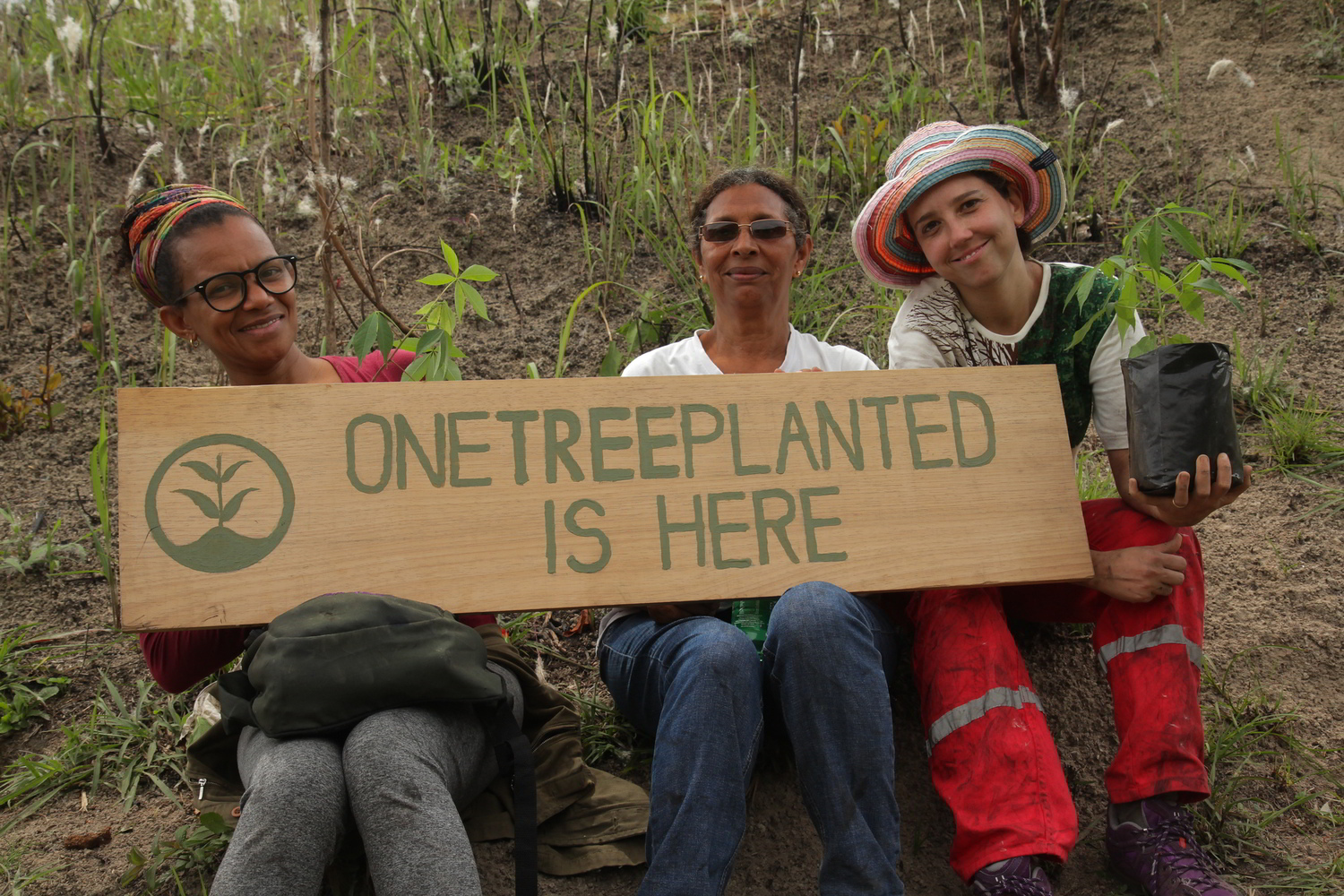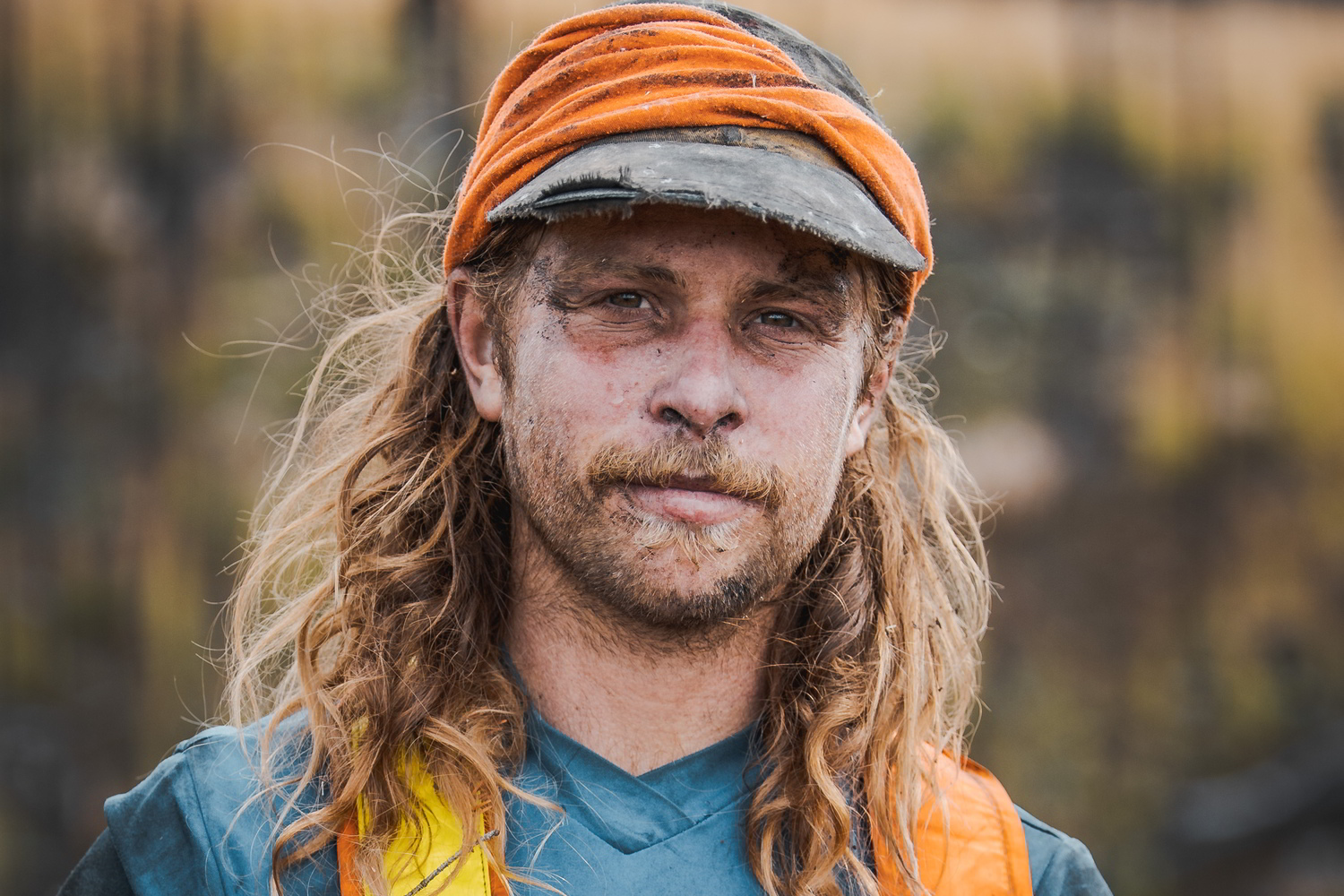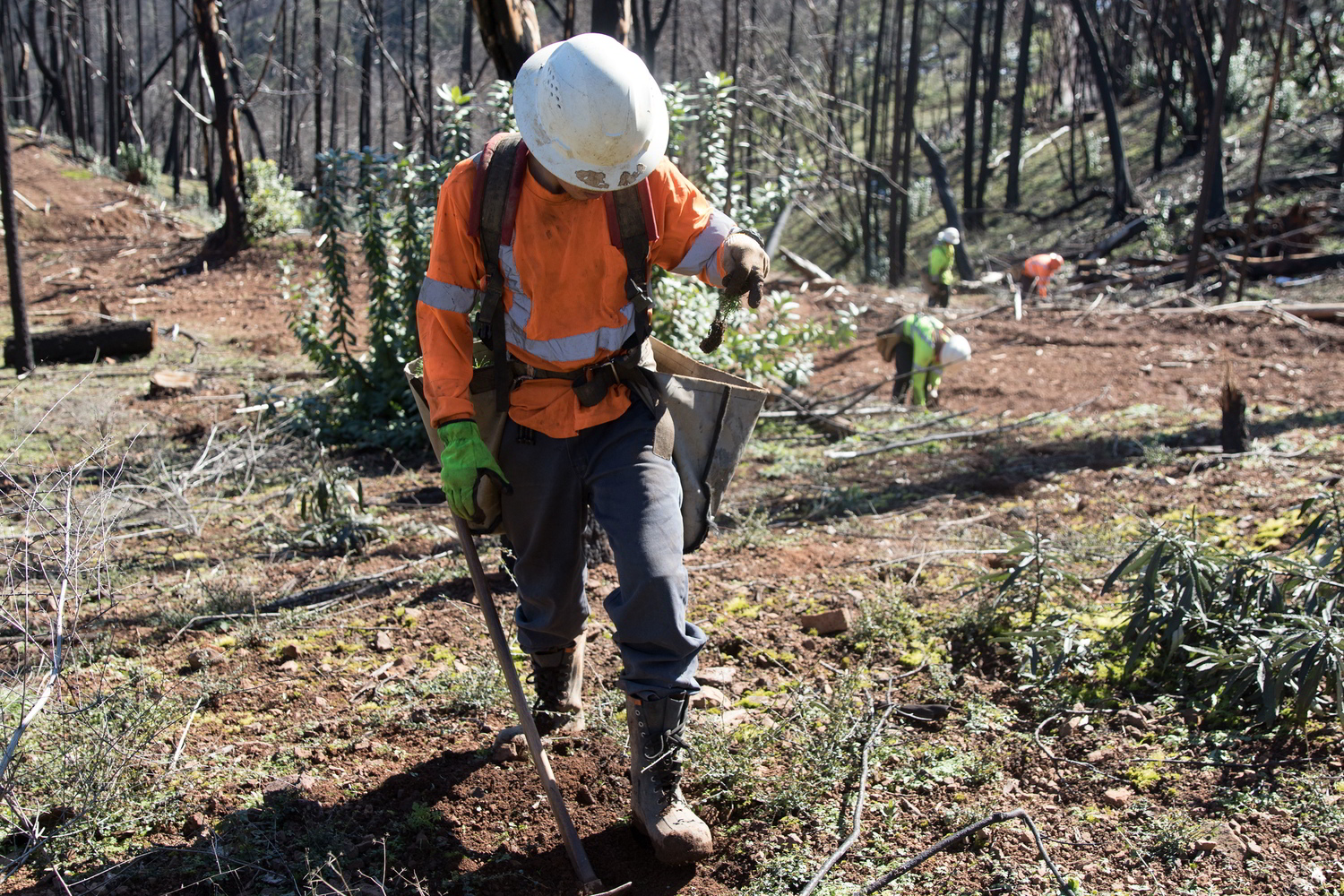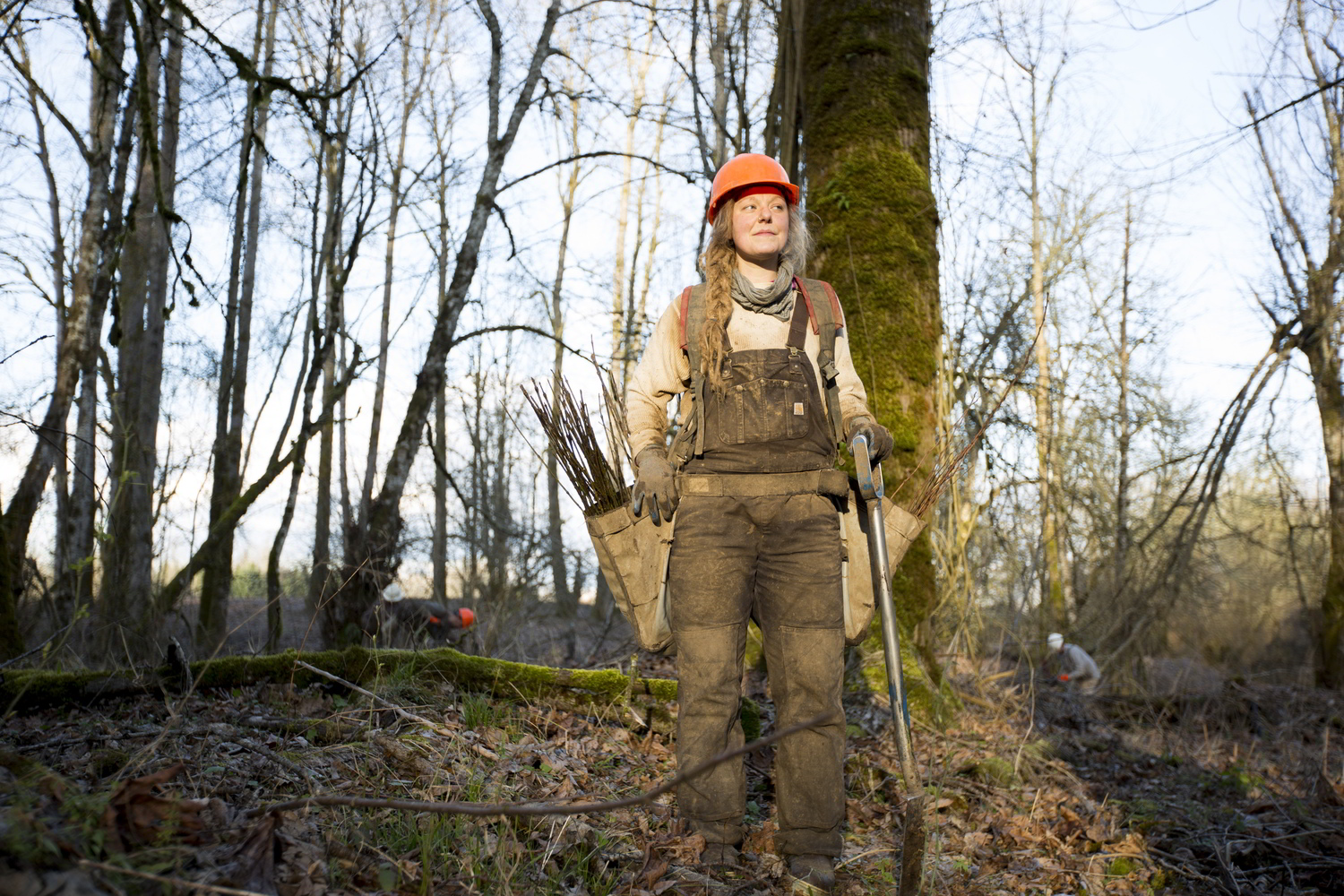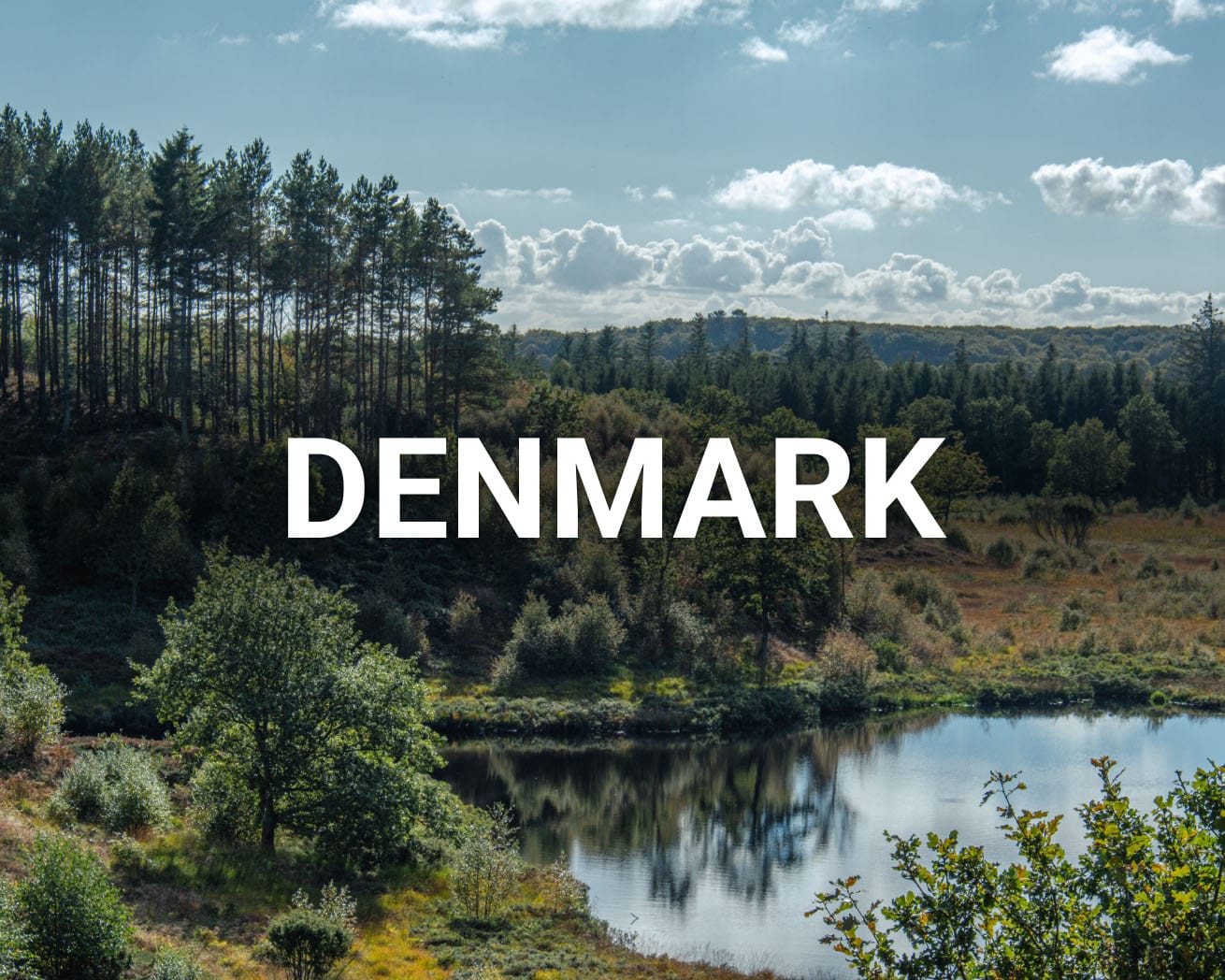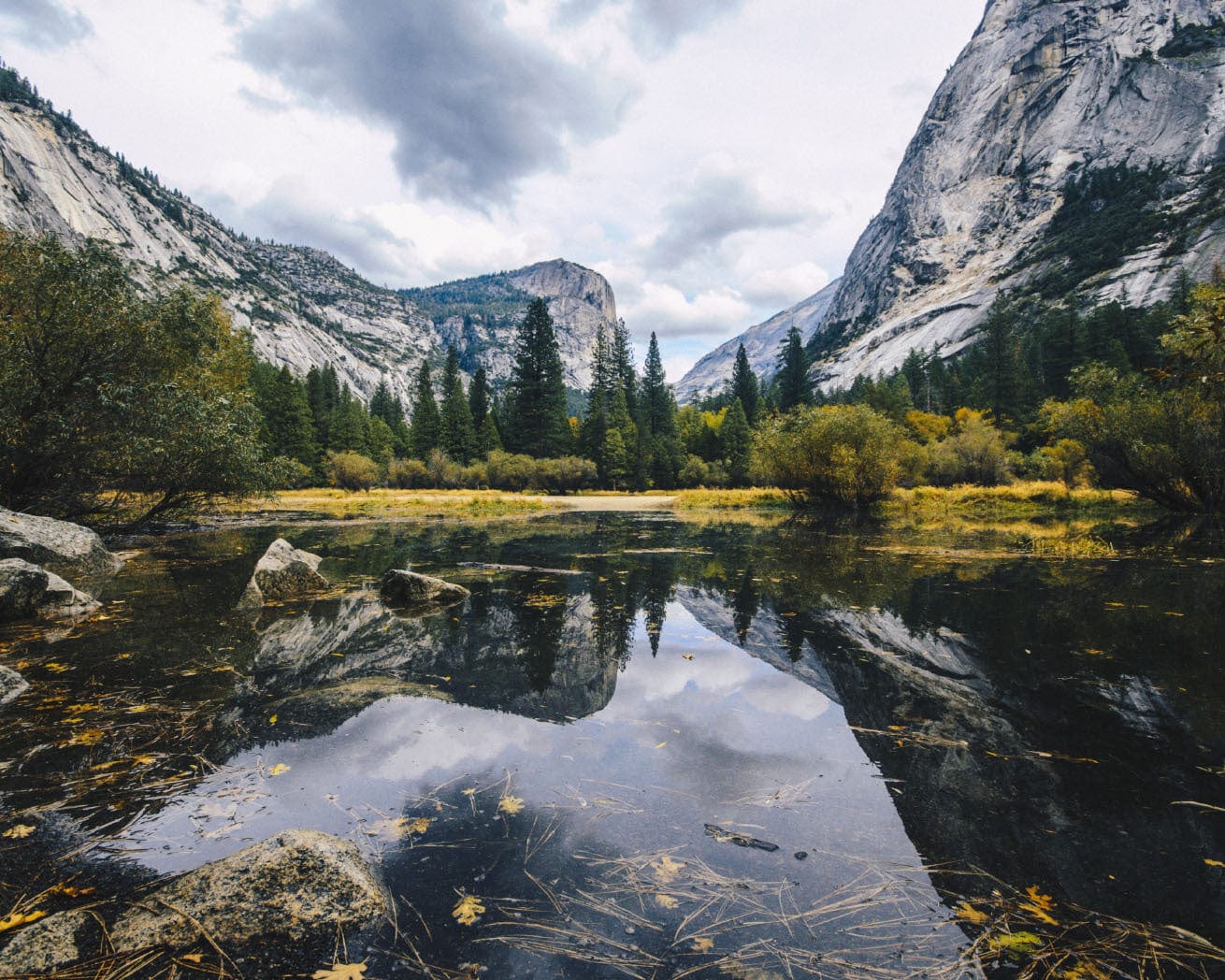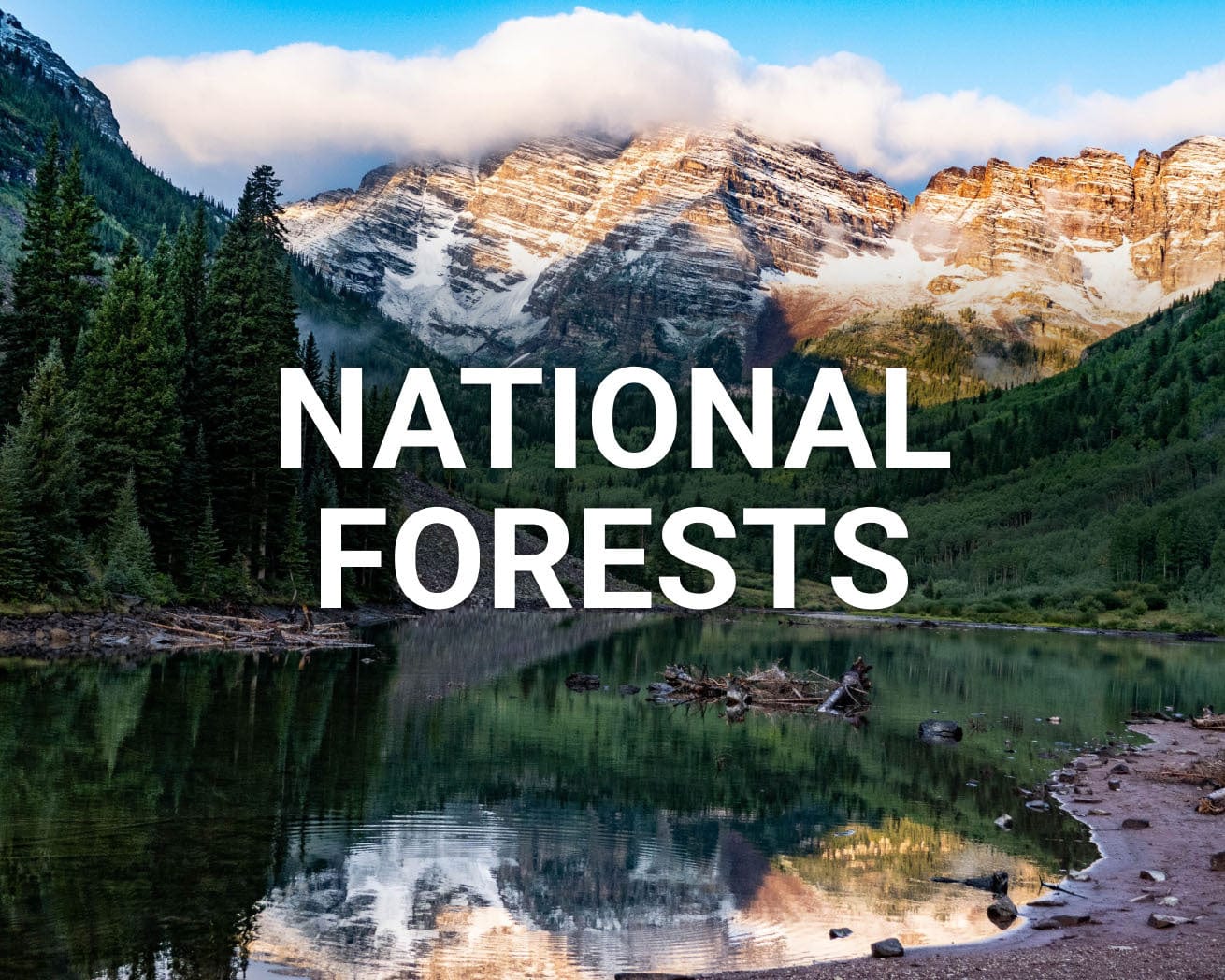

Imagine yourself in a serene forest clearing, where the sun streams through the leaves, casting a warm glow on the tall tree trunks.

As you study the intricate patterns in the wood, you notice the dance of light and shadow. Running your fingers along the grooves, you can almost hear the whispers of winds that have blown through the decades. Every knot, curve, and bulge speaks of the tree’s journey – the storms it weathered and the elements it faced.
Then, your eyes are drawn to the rich colours, hues shifting subtly like brushstrokes on an artist’s canvas.
The warm amber tones evoke lazy summer sunsets, while the cool greys and browns echo the autumn rains.
This kaleidoscope of colours is nature’s artwork, evolving with the changing seasons. But beyond the natural interplay of colours and sunlight lies something strong yet resilient, powerful yet humble: the tree itself.


Every Tree Has a Soul
Hidden beneath the rough bark of every tree trunk is an inner beauty, a living spirit shaped over many years. This inner essence, the very “soul” of the tree, is nature’s magnificent tapestry. For George Nakashima, the world-renowned woodworker and artist, uncovering and expressing this essence was the ultimate goal of the craft.

In The Soul of a Tree, Nakashima writes, “Each flitch, each board, each plank can have only one ideal use. The woodworker, applying a thousand skills, must find that ideal use and then shape the wood to realize its true potential.” (Nakashima, 1997)

Celebrating Nature’s Imperfections
To most, a piece of timber seems simple – bark and grains.
But for those who understand wood’s essence, these distinctive “flaws” are its beauty.
Nakashima carefully studied and celebrated these imperfections, realizing that “The created object can live forever. The tree lives on in its new form.” He saw wood as a living material, constantly reacting to its environment.

Knots, burls, and irregular patterns express each tree’s resilience journey, born from enduring harsh winds, recovering from injuries, and standing firm through changing seasons. Concealing these markings would erase the living record of perseverance etched over decades.
How Does a True Artisan Perceive Wood?
A master artisan highlights rather than hides these organic textures. Twisted whorls and ridges aren’t defects but maps exposing the indomitable spirit of overcoming tribulations. Bulging burls depict trees healing wounds into nutrients for new growth, while cracks speak of the tenacity to survive wildfires, droughts, and time.


Tracing distinctive grains and gnarls reveals the spirit living within every plank and beam, shaped by wind, rain, and seasons.
Honouring Wood’s Living Stories
Using reclaimed wood for projects like hardwood flooring pays homage to Nakashima’s philosophy, honouring the material’s living stories.
With reclaimed wood, you aren’t dealing with fresh-cut, factory-finished floor planks. Instead, the wood tells a story through its naturally weathered texture and patina.


Fundamental Principles of Reclaimed Wood:
- Respecting Natural Materials: Salvaging and repurposing vintage wood respects its inherent character. Tight grains, wormholes, knots, and mineral streaks all contribute to the wood’s journey, giving it a unique personality.
- Sustainability: Using reclaimed wood extends the lifespan of existing resources, reducing waste and the need for new raw timber. It’s an eco-friendly choice that takes the pressure off forests.
- Unique Character: No two reclaimed wood floors are identical, each plank telling its story through colours, grains, and nail holes.
- Honouring Craftsmanship: Repurposing vintage planks into new floors is an art form. Careful preparation involves de-nailing, sanding, and fitting to highlight the wood’s natural beauty.
“There must be a union between the spirit in wood and the spirit in man. The grain of the wood must relate closely to its function… The tree lives on in its new form.” (George Nakashima, AZQuotes)
The Eternal Essence
Appreciating wood is about recognizing the living spirit, the tale of perseverance and resilience cradled in every grain.
Whether you’re an artisan repurposing timbers or simply admiring a tree’s gnarly textures, if you truly observe and listen, there’s a resonance with that indomitable essence.
References:
- Nakashima Woodworkers. (n.d.). Retrieved from nakashimawoodworkers.com
- Nakashima, G. (1997). The Soul of a Tree: A Master Woodworker’s Reflections. Kodansha USA. Amazon Link
- Nakashima, G. (n.d.). Quote on wood and spirit. AZQuotes
In the burgeoning landscape of interior design, the fervour with which we are reinventing our living and working environments in the UK—a market worth a staggering £1.5 billion in 2023—speaks volumes about our collective quest for spaces that nurture our souls and bodies. As we pivot to a new era, integrating more natural elements and sustainable materials is becoming imperative. For those yet to embrace the verdant hues of greenery, you’re potentially sidestepping the most transformative trend of 2024: the essence of biophilic design.



Biophilia: Our Eternal Affinity with Nature
The visionary entomologist E.O. Wilson introduced the concept of biophilia in his seminal 1984 book, explaining our innate affinity for the natural world. Wilson argues, “We are in the fullest sense a biological species and will find little ultimate meaning apart from the remainder of life.” Our deep-rooted connection with nature transcends aesthetic appreciation—it’s a vital component of our essence, woven into the very fabric of our DNA.
Historically, our ancestors thrived in symbiosis with their natural surroundings, deriving sustenance, shelter, and spiritual enrichment from the earth. Despite centuries of technological advancement and urban sprawl, our intrinsic need for natural connections must remain public. The interplay of light, colour, texture, and organic forms creates aesthetic harmony and is pivotal for our physical, mental, and emotional health. Many studies corroborate that proximity to natural elements significantly enhances happiness, health, and productivity across all demographics.

Our Aged Wood
Our Aged Wood
Integrating natural elements—such as plants, wood, and sunlight—has proven to substantially increase productivity, creativity, and job satisfaction in the workplace. The Human Space Report highlights that employees in environments with natural features report a 15% higher overall well-being, 6% more productivity, and 15% greater creativity.
Our Reclaimed Wood
Biophilic Design: Trends and Transformations
Biophilic design sets new paradigms for our living and working spaces as we gaze into the future. The Barbican Conservatory in London exemplifies this trend, with its lush tropical flora and warm-toned wooden accents creating a serene urban retreat. Similarly, the Limewood Hotel in Hampshire exemplifies biophilic principles, harmoniously blending luxurious accommodations with the rustic charm of the New Forest National Park.
Here are a few biophilic design trends that are gaining momentum:
Embrace Plant Life: Integrating plants into home interiors—from kitchens to bedrooms—is becoming increasingly popular. Plants not only enhance the aesthetic quality of a space but also have health benefits, such as reducing stress and improving mood. However, the choice of plants matters; varieties with soft, rounded leaves tend to be more soothing than those with sharp edges.
Incorporate Organic Shapes and Patterns: Curvilinear forms and fractal patterns, which mimic the undulating waves and rippling dunes, are staples in interior design. These elements introduce a dynamic, naturalistic flow into living spaces, promoting a sense of calm and connection with the natural world.
Maximize Natural Light: Exposure to natural light is crucial for maintaining psychological well-being. A study published in Natural Mental Health found that ample daylight exposure was linked to a 20% lower risk of depression. To enhance natural light, consider more oversized windows, skylights, or even glass walls that connect the indoors with the outdoors.
Engage the Senses: Biophilic design also encompasses auditory and olfactory experiences. Adding water features and using natural scents can transform a space into a multi-sensory haven, enriching the overall experience of the inhabitants.

“Naturally aged wood bolsters biophilic design, connecting indoor spaces with the natural world.” Andres Uprimny of The Reclaimed Flooring Company
Conclusion
Biophilic design transcends mere trendiness—a fundamental shift in how we conceive our personal and professional spaces. By integrating natural elements, we pay homage to our biophilic roots and enhance our well-being and productivity. As we continue to shape our environments, let the principles of biophilic design guide our choices, ensuring that we create spaces that are not only beautiful but also deeply connected to the natural world.
References
- Wilson, E.O. (1984). Biophilia.
- Human Space Report on Workplace Productivity.
- Research published in Frontiers in Psychology, 2021.
- A study from Natural Mental Health on the benefits of natural light.
Travel is a gateway to the world’s wonders, a path to discovering new vistas.
Yet, in the age of regenerative exploration, travel transcends traditional boundaries. It becomes a transformative journey, unveiling the beauty of diverse landscapes and cultures while enriching and revitalising them.
What is Regenerative Travel: A Deeper Dive
Regenerative travel elevates the concept of sustainable tourism.
It goes beyond minimising our environmental footprint to actively rejuvenate the places and communities we visit.
This approach transforms travellers into agents of positive change, celebrating local traditions, engaging in conservation efforts, and making mindful choices that contribute to the well-being of our global village.
Illustrative Examples of Regenerative Design
- Grootbos Private Nature Reserve, South Africa, embraces regenerative tourism through education, community empowerment, and conservation. It offers nature-based experiences while tackling challenges like socioeconomic inequalities and environmental degradation.
- Chumbe Island Coral Park, Zanzibar: This sanctuary for coral reef ecosystems generates funds through sustainable tourism activities to recover reefs and create employment opportunities, thereby steering communities away from illegal fishing.
- Bardessono Hotel & Spa, United States: Known for its luxury and sustainability, this establishment faces the challenge of balancing opulence with environmental stewardship and has achieved LEED Platinum certification as a result.
- Finca Luna Nueva Lodge, Costa Rica: Champions a “farm-to-table” experience while embracing sustainable and regenerative practices to preserve biodiversity, improve soil health, and support the local community.
A New Dawn in Design and Architecture: From Travel
The ethos of regeneration is spreading its roots into the realms of design and architecture, inspiring the creation of spaces that not only exist in harmony with their surroundings but also contribute to their vitality.
Innovative designers are reimagining waste as resources, crafting materials that breathe new life into our environments and economies. This movement towards a circular economy champions using renewable resources and repurposing waste, paving the way for a future where every design decision fosters sustainability and resilience.
As Laurence Carr, a renowned regenerative designer, notes, embracing circular practices allows us to turn our environmental impact from negative to positive,” Given that the cost of raw materials makes up a big chunk of production expenses, using less desirable leftover materials from unavoidable processes can actually give manufacturers a significant upper hand,” said Carr. “In this way, circular principles are not just good for the environment and human health; they also benefit the economy at large. It’s a win-win-win!”
Embracing The Circular Economy
To truly revive our surroundings, we must rethink production and embrace the circular economy – prioritising renewable, non-toxic materials while reusing and recycling existing waste.
Impact Acoustic leads this charge, which crafts lightweight, structurally sound panels from cotton linters—a by-product of the cotton industry typically discarded as waste.
Utilising solar energy and closed-loop water recycling, their production process is nearly zero-waste.
“Our cotton acoustic tiles represent the epitome of circularity,” explains CEO Sven Erni. “The material can be reused repeatedly without extra resources whilst maintaining quality.”
Erni emphasises, “We firmly believe that embracing the circular economy is crucial for addressing challenges such as resource depletion, waste generation, and environmental degradation while fostering a more sustainable, prosperous, and resilient society.”
The Collective Path to Regeneration
As we embark on this journey together, we all hold the power to make a difference.
Through small, intentional acts at home, advocating for sustainable practices, and embracing circular principles in every aspect of our lives, we can collectively forge a path to a regenerative future.
It is a future where design, travel, and daily living are intertwined in a symbiotic relationship with the earth. It creates a world where every step leaves a positive imprint, fostering hope and renewal for future generations.

2024 is poised to be a year of sustainability in interior design, driven by a growing awareness of the environmental impact of manufactured materials.
Consumers now more than ever recognize the need to prioritize natural materials and biophilic design, making sustainability a mainstream concern.
In the wake of allegations of greenwashing by major brands in 2023 and ongoing discoveries about the dangers of microplastics, the shift toward sustainable design is a natural response to safeguard our homes and the planet.
Sustainable interior design trends for 2024 will revolve around the origins, reusability, and eco-friendliness of the materials we incorporate into our living spaces.
These trends will also include the latest energy-saving and energy-efficient technologies, resulting in biophilic, technologically advanced environments that enhance our well-being and our families.
Embracing Durability and Timelessness
Creating sustainable homes hinges on materials’ durability and timeless design quality.
Thoughtful choices of robust, natural materials like reclaimed wood and stone offer longevity and adaptability, evolving gracefully with our changing needs.
When combined with timeless designs crafted by skilled artisans, our choices become an investment in both our homes and the planet, aligning with the ethos of sustainability.
Eco-Friendly Kitchens
The year 2024 will witness a shift towards kitchens constructed from sustainable materials, leaving behind the era of cheap, disposable alternatives.
The focus will be on materials that endure and represent genuine investments in our homes and the environment.
Consumers will actively seek out suppliers with green credentials, looking for certifications like FSC, LEED, and B Corp to ensure the sustainability of their choices.
Technology and Ecology
Integrating technology into homes, historically not synonymous with sustainability, is evolving to align with eco-consciousness.
Tech companies are responding to consumer demands for sustainability, incorporating Wi-Fi technologies to future-proof home appliances.
Modern tech-enabled appliances are designed for energy efficiency and resource conservation, making them indispensable components of sustainable design in 2024.
Biophilic Design
Biophilic design, beneficial for both well-being and the planet, can transform our homes into havens of serenity.
Incorporating elements like plants, wood, and stone improves air quality and connects us to the natural world, promoting ecological harmony and personal tranquillity.
Sustainable Personalization
Customizing our living spaces to suit our specific needs, especially in kitchens and bathrooms, is critical to future-proofing our designs.
Multifunctional and adaptable spaces that can transition to meet evolving needs without replacing existing elements will be central to personalization in 2024.
Modular design and transformative layouts, crafted from sustainable materials and practices, will define this approach.
Sustainable Colour Trends
Colour trends in 2024 draw inspiration from nature, with warm hues reflecting natural tones, from winter sky creams to forest greens and earthy reds and oranges.
Nature-mimicking colours enhance the biophilic experience of our spaces, echoing their calming effects.
Selecting paints and wall coverings from manufacturers with ecological credentials, such as being plastic-free, low VOC, and B Corp certified remains essential.
In addition, PANTONE selected 13-1023 Peach Fuzz to become the colour of the year 2024.
An indicator that earthy palettes and colours that nurture the spirit, mind, body, and soul align with current wellness trends.
Sustainable Design for 2024
In 2024, consumers are acutely aware of the importance of protecting the environment and making thoughtful choices.
Prioritizing sustainable design is not just a trend; it’s a philosophy that helps us make conscientious decisions for our homes and the planet.
In her groundbreaking work, “Thrive,” Arianna Huffington introduces the concept of the Third Metric, urging us to redefine success beyond the conventional markers of wealth and power.
Centred on well-being, wisdom, wonder, and giving, Huffington’s approach challenges societal norms and reshapes our perspective on leading a fulfilled life.
As we delve into Huffington’s thought-provoking insights, we embark on a transformative journey toward a more deliberate, mindful, and purposeful existence.
Redesigning the Yardstick of Success
Huffington raises concern over the conventional measures of success, emphasizing that “To live the lives we truly want and deserve, we need a Third Metric.”
Her call for a paradigm shift prompts us to move away from the relentless pursuit of traditional markers of achievement and focus on holistic pillars that enrich our lives. Echoing the thoughts of various intellectuals, Huffington’s book converges on the essence of practising intentional, mindful, and measured craftsmanship in our daily lives.
Transitioning from Struggle to Grace
Transitioning to a thriving life, as Huffington indicates, is a practice demanding commitment and mindfulness. She notes, “Moving from struggle to grace requires practice and commitment,” highlighting the conscious effort needed for this transformation.
This shift invites us to cultivate mindfulness, self-reflection, and purposeful practices, paving the way for a more harmonious life rooted in well-being, wisdom, wonder, and giving.
The Essence of a Life Well-Lived
Huffington repeatedly underscores the significance of eulogies and the legacy we leave behind. “Our eulogies are always about the other stuff: what we gave, how we connected,” emphasizing the importance of intangible qualities over societal markers of success. This juxtaposition prompts us to centre our lives on aspects that bring depth and meaning, aligning our daily actions with our values.
Crafting Our Daily Eulogy
Huffington emphasises that our daily choices and actions author the narrative of our existence. “We’re actually writing it all the time, every day,” she notes, underlining the significance of aligning our actions with our deeper values. Embracing the Third Metric allows us to weave a narrative that celebrates well-being, wisdom, wonder, and giving, shaping a legacy of purpose and authenticity.
Harmonizing Heart and Mind
Advocating for a balanced approach, Huffington highlights the importance of integrating both heart and mind. “When they work together, the heart leading through empathy, the mind guiding us with focus and attention,” she points out. This harmony fosters reduced stress and cultivates a centred, fulfilling life by synergising empathy and focus in our daily pursuits.
The Vitality of Sleep and Renewal
Highlighting the impact of sleep on our well-being, Huffington emphasises, “Sleep deprivation reduces our emotional intelligence.” Acknowledging the critical role of sleep in various aspects of our lives, she advocates for prioritising rest to enhance emotional intelligence and nurture healthier relationships.
Rekindling Wonder in Everyday Life
Encouraging a shift in perspective, Huffington invites us to rediscover wonder in our daily experiences. “Sometimes we must look through a different set of eyes,” she suggests, advocating for a renewed curiosity to find awe-inspiring moments in the ordinary.
Embracing Restorative Rituals
Recognising stress management as vital, Huffington recommends integrating brief recovery rituals throughout the day. “Every few hours, take sixty seconds of recovery time,” she suggests, emphasising the importance of these moments in reducing stress and nurturing overall well-being.
In Summary
Arianna Huffington’s “Thrive” challenges us to reconsider the definition of success through the Third Metric. We embark on a transformative journey towards a more fulfilling life by prioritising well-being, wisdom, wonder, and giving. Moving beyond struggle requires commitment, offering immeasurable rewards—a life centred on genuine connections, kindness, and purpose. Let’s author a daily narrative aligned with the eulogy we aspire to have—one that celebrates the profound impact of well-lived moments and a legacy focused on the Third Metric.
Mentions:
- Quotes and concepts from Arianna Huffington’s book “Thrive.”
- References to ideas and principles shared by various intellectuals and thought leaders as part of Huffington’s Third Metric philosophy.
In today’s hyper-connected world, the idea of slowing down might seem counterintuitive.
However, in his enlightening book “In Praise of Slowness – Challenging the Cult of Speed,” Carl Honore sheds light on the profound benefits of embracing slowness.
Through his profound insights, let’s delve into the notion that savouring life’s moments can lead to a deeper appreciation of our surroundings, improved well-being, and enhanced creativity.
The Profound Beauty of Slowness
“Knitting’s beauty lies in its slowness,” remarks Murphy. The gradual pace allows us to witness the inherent beauty in every stitch, shifting the focus from mere completion to cherishing each moment. In a world fixated on speed, deliberately slowing down grants us the gift of revelling in the intricacies of our daily lives. Whether in activities or pursuits, embracing a slower tempo enables us to connect with the present, noticing the subtle nuances that often escape our attention.
Rediscovering Time and Tranquility
Amid life’s chaos, losing sight of what truly matters is easy. “Slowing down lets us reclaim time and tranquillity, fostering meaningful connections—with people, culture, work, nature, and ourselves.” This deliberate deceleration brings more joy and offers the space to forge genuine connections and nurture relationships. It allows us to immerse ourselves in the world’s beauty, fostering mindfulness and enriching our experiences.
The Power of Reflection
“Our minds flit like bees in a garden, constantly shifting thoughts.” Honore highlights the prevalent rapid thinking in our modern era, where immediate responses often overshadow thoughtful contemplation. However, he proposes that slowing our mental pace can improve health, inner calm, heightened focus, and enhanced creativity. Reflection becomes vital for personal growth and innovation, enabling us to pause before reacting and fostering deeper insights.
Balancing Pace and Pleasure
“Speed can bring excitement, but moderation is key,” says Kliemt in Honore’s book. Acknowledging speed’s role while understanding the significance of a balanced approach is crucial. Life thrives on a rhythmic harmony between rapid progress and gratification from a slower, deliberate stride.
Prioritizing Quality Over Quantity
While productivity and multitasking often define success, Honore advocates for a shift in perspective: “It’s better to do fewer things but relish them fully.” This notion underscores the importance of quality over quantity, urging us to focus on select pursuits that truly bring fulfilment rather than scattering our energy across numerous endeavours.
The Slow Movement: A Recipe for Balance
“In our pleasure-seeking era, the Slow movement champions joy.” Emphasizing the importance of doing things deliberately and relishing them encourages us to embrace life’s richness. Whether savouring a home-cooked meal, marvelling at a scenic vista, or strolling leisurely, the Slow Movement champions enjoy unhurried moments.
In Summary
Amid a society that celebrates speed and instant results, Honore’s wisdom prompts us to embrace slowness. By integrating elements of the Slow movement into our lives, we uncover newfound richness in experiences and a deeper connection with the world around us. Let’s pause, relish, and celebrate the art of slowness.
Mentions:
- Carl Honore’s book “In Praise of Slowness – Challenging the Cult of Speed.”
- Quotes from individuals like Murphy and Kliemt are referenced in Carl Honore’s book.
Climate change looms as an undeniable global crisis, and within the complex web of climate-altering factors, embodied carbon has remained largely unnoticed until recently.
As Mr. Climate Crusader Bill Nye puts it, “We’ve been focused on curbing greenhouse gas emissions from energy and transportation, but it’s high time we zoom in on the embodied carbon within our construction and manufacturing industries.”
Understanding the Enigma of Embodied Carbon
Embodied carbon encompasses the entire carbon dioxide (CO2) emissions spectrum linked to a product or building’s life cycle.
Echoing the sentiments of environmental architect Jane Goodall, it’s a holistic concept that considers not just a building’s operational carbon emissions during its use (like heating and cooling) but also the emissions arising from its creation and eventual deconstruction.
Jane emphasizes, “Our world is a seamless web of connections, and embodied carbon is just one strand we can’t afford to ignore.”
The Alarming Impact of Embodied Carbon
For meaningful climate action, we must tackle both operational and embodied carbon emissions.
Buildings are crucial in this endeavour, as they’re responsible for a substantial chunk of global carbon emissions.
Building on this, Sir David Attenborough, renowned natural historian and broadcaster, underscores that “Buildings, from their very foundations to their roofs, have a substantial environmental footprint, and it’s a matter of environmental responsibility to address it.”
Why Every Ounce of Embodied Carbon Counts
Relying solely on curbing operational carbon emissions overlooks a significant piece of the environmental puzzle.
A building might boast impressive energy efficiency during its operational life, but if its construction had a hefty carbon footprint, the overall environmental impact remains considerable.
Speaking to this, Dr. Sylvia Earle, marine biologist and advocate for the environment, emphasizes, “In the grand orchestra of our planet’s ecosystems, embodied carbon is a note we can’t afford to be out of tune with.”
A Call for Holistic Assessment
Conducting life cycle embodied carbon assessments of materials is an industry game-changer.
This approach encourages a comprehensive view of a building’s environmental impact, assisting architects, developers, and policymakers make informed decisions regarding materials and construction methods.
Recognizing the significance of embodied carbon, legislation is increasingly being implemented.
Many regions now have building codes and standards restricting embodied carbon emissions, propelling the construction industry towards sustainable practices such as reclamation and deconstruction.
Your Role in the Battle Against Embodied Carbon
- Material Selection: Right from the project’s inception, when discussing it with your designer or architect, express your intention to reduce embodied carbon. They can guide you toward low-carbon, reclaimed, or recycled materials, significantly reducing embodied carbon.
- Efficient Construction Practices: Innovations like modular construction and on-site renewable energy sources are being employed to reduce the carbon footprint linked with construction. Your architect can recommend innovations suitable for your design needs.
- Design Optimisation: Architects and engineers working in tandem can design more efficient buildings, minimizing the use of carbon-intensive materials and reducing waste. You can verify your architect’s eco-credentials by looking for their BREEAM or LEED certifications.
In Conclusion
Effectively addressing climate change necessitates a comprehensive approach considering all avenues of carbon emissions. Embodied carbon is a critical piece of the puzzle, and it’s imperative that the manufacturing and construction industries act upon it. By selecting low-carbon materials, optimizing designs, and adhering to emerging legislation, we can make substantial progress in trimming the carbon footprint of our built environment.\
The real estate sector holds a pivotal role in this endeavour. It’s no longer just about creating energy-efficient buildings; it’s about doing so in the most sustainable and environmentally friendly manner. As legislation shifts to prioritize the reduction of embodied carbon, the industry must adapt and spearhead the journey towards a greener, more sustainable future.
Sources:

In the sprawling realm of interior design, a few names shimmer with an exceptional talent for turning spaces into true works of art. One such luminary is Rose Uniacke, an English decorator, designer, and antiques dealer whose creative prowess has enchanted design enthusiasts worldwide.
The latest addition to her repertoire is the book “Rose Uniacke at Work,” a close-up look into her creative process and design philosophy.
A Warmth in the Pages as in the Spaces
This book echoes the warmth that emanates from the spaces she magically designs. Despite the elegance of her signature style, Uniacke’s rooms effortlessly embrace a sense of ease, painted with neutral tones and drenched in natural light. Her work has rightfully placed her on a revered pedestal within the design industry.
A Voyage of Inspiration
Stepping into the world in September 2023, “Rose Uniacke at Work” is more than just a coffee table adornment—it’s a visual odyssey through the genius mind of a creator. Within its pages, Uniacke candidly shares her experiences, influences, and design principles that have shaped her illustrious career.
Let’s peek into what makes this book essential for design aficionados.
The Artistry Unveiled
“Rose Uniacke at Work” takes a deep dive into Uniacke’s design journey from conception to realization. Readers are invited into her meticulous approach to every project, emphasizing proportion, balance, and functionality. Each space she crafts is intended to harmonize with its users, promoting a sense of utter relaxation.
Ver esta publicación en Instagram
A Philosophy of Elegance
Uniacke’s design ethos is rooted in the belief that space should charm visually, function effortlessly, and stand the test of time. Her book explores the delicate fusion of classic and contemporary elements, painting spaces with harmony and sophistication.
The Dance of Antiques and Art
Uniacke’s passion for historical pieces gracefully waltzes into her designs. The book showcases her expertise in seamlessly integrating antiques and art into modern settings, breathing new life into cherished relics.
Stunning Interiors
Through captivating photographs, “Rose Uniacke at Work” parades an array of Uniacke’s projects, from residential sanctuaries to commercial wonders. Each project mirrors her ability to craft spaces that extend a warm invitation while captivating the eye.
Textures and Tales of Materials
Uniacke’s affinity for natural materials and textures is a recurrent theme in her work. Her book highlights how she uses materials like wood, stone, and textiles to infuse warmth and character into her designs.
Collaborating with Clients
Uniacke’s book ventures into client collaborations, revealing her skill in translating their visions into tangible reality while maintaining her distinct design aesthetic.
A Timeless Muse
“Rose Uniacke at Work” is an eternal fount of inspiration for design enthusiasts, brimming with ideas, tips, and insights to elevate any interior space.
In a world where design trends ebb and flow, Rose Uniacke’s work stands as a beacon of enduring classic design.
“Rose Uniacke at Work” displays her exceptional talent and beckons readers into a journey of creativity and elegance. Whether you’re a seasoned designer, a homeowner seeking inspiration, or simply an admirer of interior design, Rose Uniacke’s book is a captivating tribute to the transformative power of aesthetics and the everlasting legacy of a proper design visionary.
We are phenomenally proud to be the official supplier of the Original flagship Soho House on Greek Street. Not only is the project itself a source of pride, but the flooring we provided to the flagship West London private members’ club, 600m2 of our finest 18th/19th century reclaimed European Oak flooring, is deservedly one of our most highly coveted products.
A Match Made in Design Heaven
The antique wood used to create our Reclaimed European Oak flooring, reclaimed from buildings across France, is an excellent material for domestic and commercial projects and has been used to magnificent effect throughout the extensive property. Made up of 5 Georgian townhouses, Soho House Greek Street is a place designed to inspire intense relaxation, and the biophilic development of our wood’s deep patina and subtle colour tone sits comfortably with the traditional feel of each room, creating a space where the users can completely unwind.
Inspiring Creativity
It makes sense that this sumptuous material is used in a place famed for offering inspirational spaces for creative minds to meet worldwide. It is the canvas on which the rest of the design choices are built, offering a sense of cohesion throughout the various spaces. The reclaimed wood flooring is highlighted through the clever use of lighting, which adds a restful touch to each room and brings out the exquisite patina and grain of the wood.
A Unique Approach
The core look of the Soho House look is inspired by founder Nick Jones, who told Homes and Gardens in 2020: ‘It’s about creating relevant, comfortable places that people feel good in and that make you want to order a second bottle of wine,’ he explains.
When a space calls for extreme comfort over any contemporary trends, using products whose provenance will respect the pace expected in its spaces makes sense. These relaxing spaces have been enriched by 600m2 of our finest 18th/19th century reclaimed European Oak flooring, which lets people feel so comfortable that their creativity can run free (with or without the second bottle of wine).
A Cut Above
Creating a space facilitating creativity was essential to Soho House Greek Street, whose founding ethos was that it should be “a place for like-minded people to come together, relax, share inspiration and ideas – and, ultimately, have fun”.
This is especially important in Greek Street ass; unlike other members clubs, which can focus almost exclusively on “net worth and job titles”, Soho House places a higher value on the morals of its members and values character over financial success. It is these treasured members who Jones wants to make feel welcome.
A Meeting of Minds
The design team have worked hard to achieve Jones’ goal of creating an atmosphere of being welcomed into a generous home with a roaring fire, relaxed dining and comfortable seating. This goal to envelop and welcome has been achieved beautifully, first here and subsequently across the later additions to his Soho House family.
To fit their design brief, Soho House’s in-house design team chose our Antique European Oak flooring for this project, which had begun as countryside barns and old wooden buildings in 18th/19th century France. The Antique French Oak flooring we supplied to this flagship venue was surface sanded by our expert craftspeople in our North of England workshops before being passed to Soho House, who had selected to finish and fit it themselves.
Our Antique European Oak
Unlike most of our salvaged and reclaimed oak flooring, the wood we used for this project is 18th and 19th-century Reclaimed Antique European Oak, made from boards carefully extracted from actual wood flooring installations from city homes or farmhouses across Europe. This provenance and the intricate process involved mean these floor planks epitomise the more luxurious side of our Antique wood flooring stories and design concepts.
Planning for Perfection
Because they are reclaimed from existing constructions, sourcing just the right boards, beams and products for each project is essential. This selection process is only possible when detailed project planning with floor plans and layout drawings are used. Where thoughtful design, stunning materials and expert craftsmanship intercept, we see the kinds of successful installations achieved throughout our Soho House, Greek Street project.
Enduring Appeal
The main difference between Antique French Oak and our other flooring is the scarcity and provenance of the materials; there is a limited supply of this flooring available, and we are always proud of the area that our experts take in preserving its unique character.
Each piece of antique wood undergoes rigorous inspection, grading, re-machining, and kiln drying to ensure stability and ease of installation. Whether a project needs refined parquet floors or larger format country-style boards, the unhurried processes are the same to make sure the resulting flooring is always beguilingly beautiful.
In Conclusion
Soho House Greek Street is a sanctuary for creative souls, nurtured by the elegance of our Reclaimed European Oak flooring. Its harmonious blend of historic charm and contemporary comfort is a testament to the power of design, craftsmanship, and a shared vision. As we reflect on this exceptional collaboration, we’re reminded that true luxury lies not just in aesthetics but in the stories that the materials carry – stories of time, resilience, and the boundless potential of human creativity.
Sources

Dedicated to our values
In a world where environmental concerns have reached critical levels, combating deforestation and restoring our planet’s natural balance has never been more crucial.
An initiative that holds immense power and aligns seamlessly with our core values is the act of planting trees.
This practice goes beyond its surface impact, contributing to countering deforestation and fostering a healthier ecosystem, cleaner air, and a brighter future.
The ethos of The ReclaimedFlooring Company has always been rooted in a commitment to crafting a legacy that transcends generations.
This dedication has been evident in every endeavour since our inception.
The 5000 trees we have thoughtfully planted over the past decade are a prime testament to this enduring commitment.
Today, we are thrilled to unveil our partnership with an organisation at the forefront of the reforestation movement: One Tree Planted.
United by a shared vision, The Reclaimed Flooring Company and One Tree Planted embark on a collaborative journey to further evolve and amplify our planting philosophy.
Our joint pledge to plant 200 trees monthly embodies our unwavering commitment to positively impacting our planet.
The Roots of One Tree Planted’s Mission
One Tree Planted’s mission to reforest the Earth is at the heart of the movement.
As outlined on their website, OneTreePlanted.org, the organisation recognises that a single tree can make a difference.
From providing habitats for wildlife to improving air and water quality, trees are a cornerstone of a thriving ecosystem.
This aligns beautifully with our belief in environmental stewardship, where we embrace the spirit of giving back to nature.
Only through the continual nurturing of woodlands can we ensure the longevity of the harmonious collaboration we have built here.
Planting trees in Denmark
RFC and One Tree Planted are currently focused on rewilding Denmark.
We recognise the importance of planting a diverse range of native tree species. We are proud to be planting 100 trees here every month, which will help to replenish the country’s forests, provide homes for local wildlife, improve soil quality, and mitigate climate change.
The organisation’s project in Denmark, as detailed on their website’s Denmark collection, is a testament to the transformative power of reforestation.
Denmark is known for its stunning landscapes but faces environmental challenges due to deforestation and habitat loss.
One Tree Planted’s project in Denmark is a beacon of hope, demonstrating how planting trees can have a cascading positive effect on the environment.
By planting a diverse range of native tree species, the organisation is replenishing the country’s forests and providing a home for local wildlife, improving soil quality, and mitigating climate change.
Planting trees in the USA
In addition to the 100 trees we plant monthly in Denmark, we are also committed to planting 100 trees in the USA.
We are proud that our trees will help to increase biodiversity, reforest public land and preserve historically and culturally valuable land.




